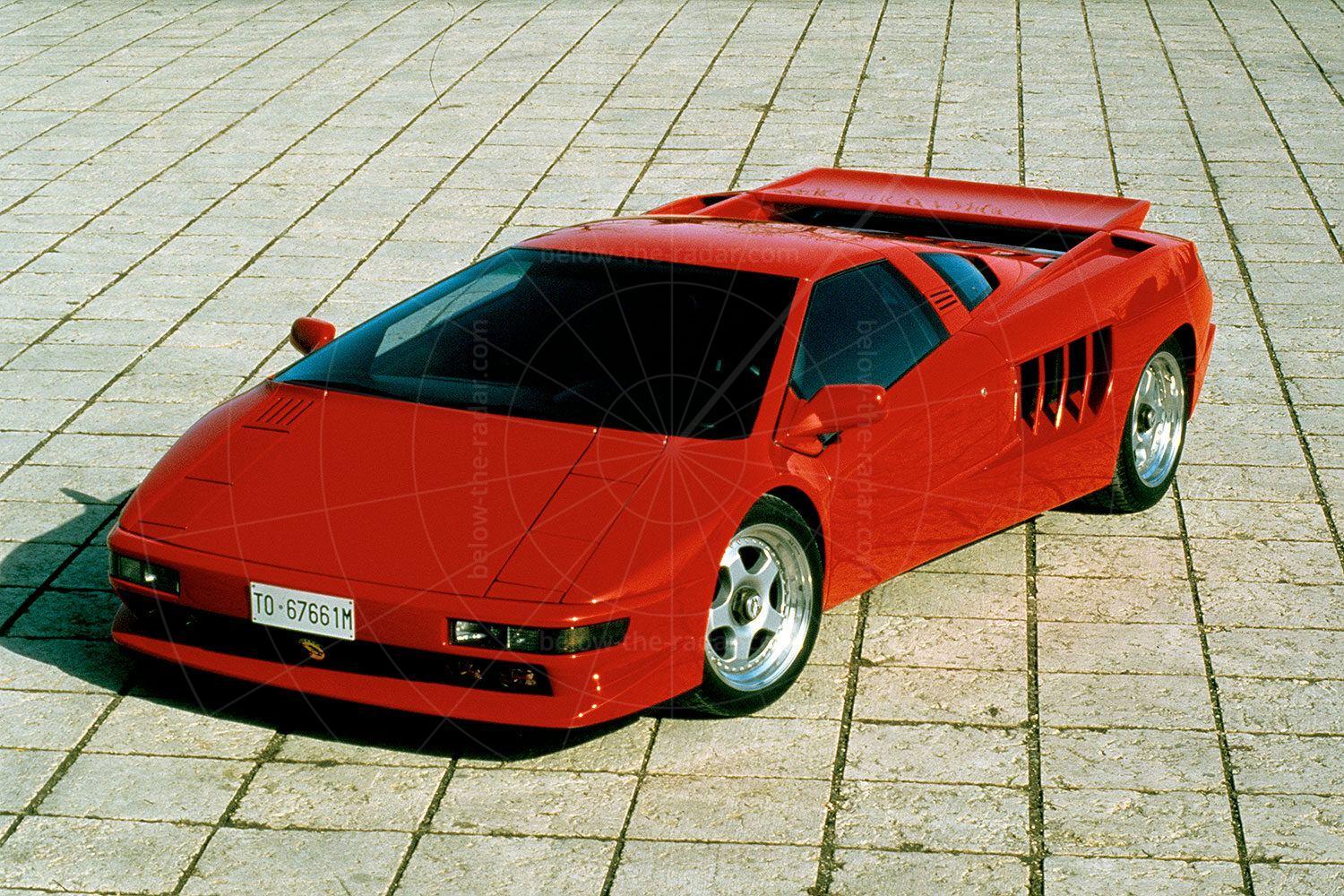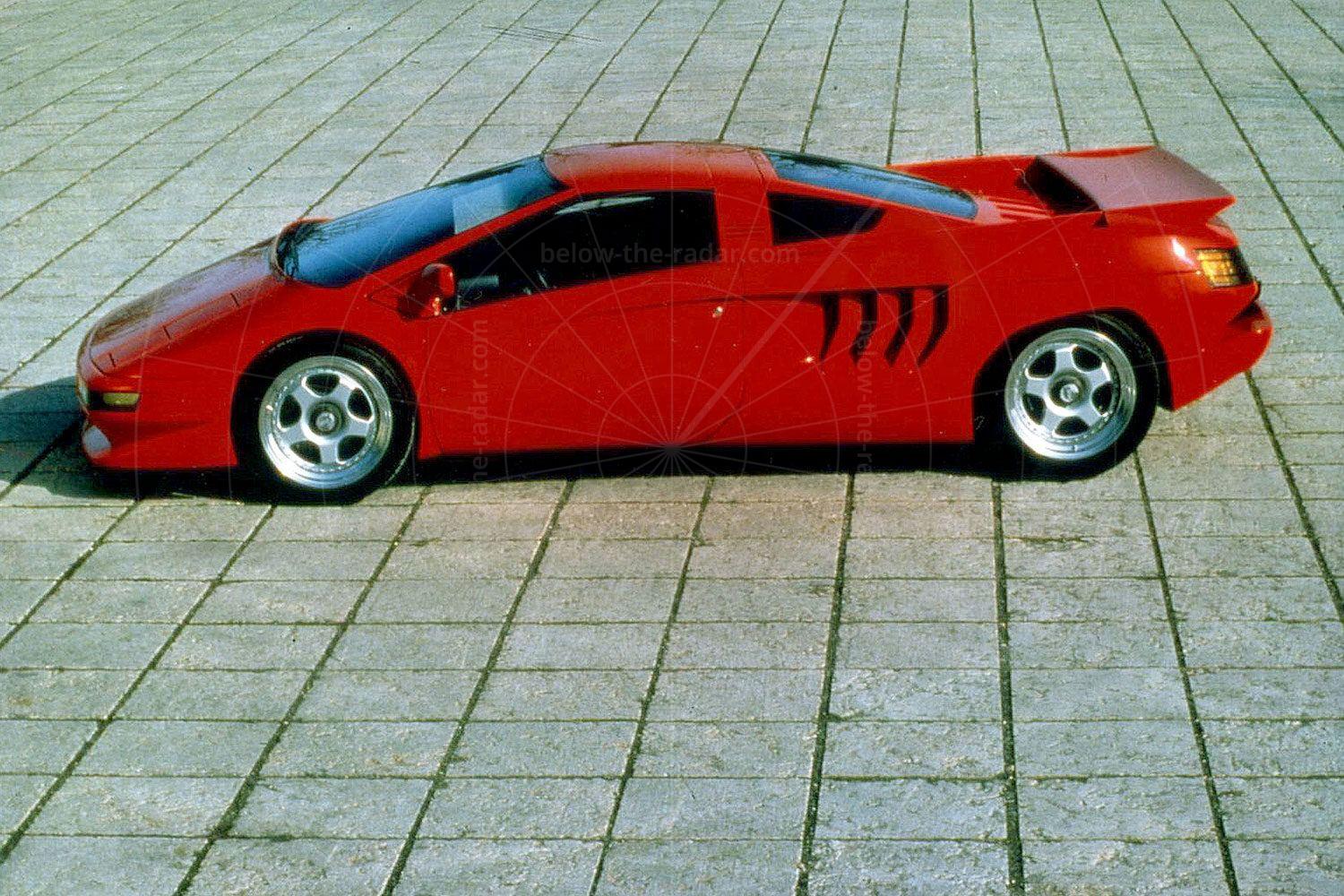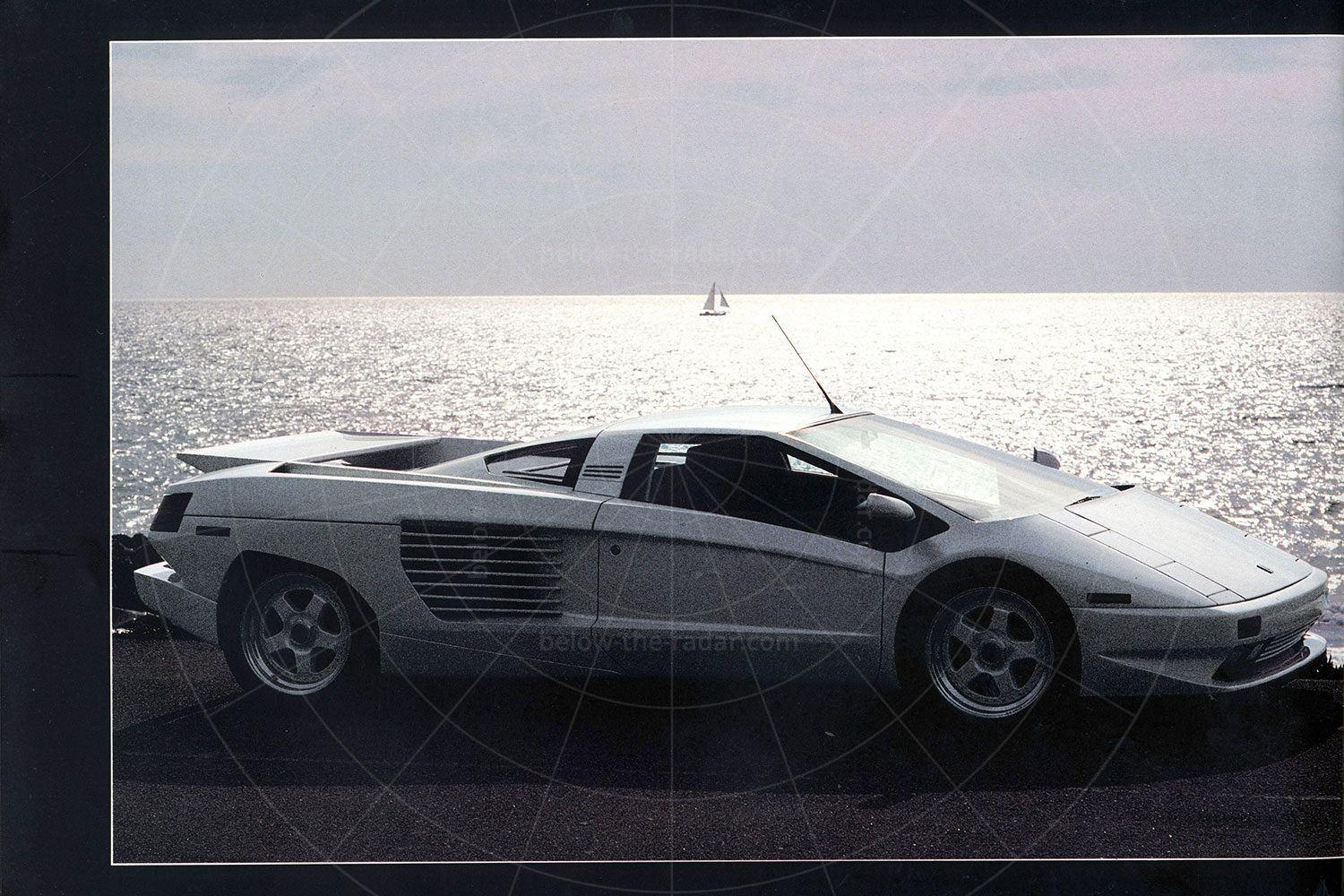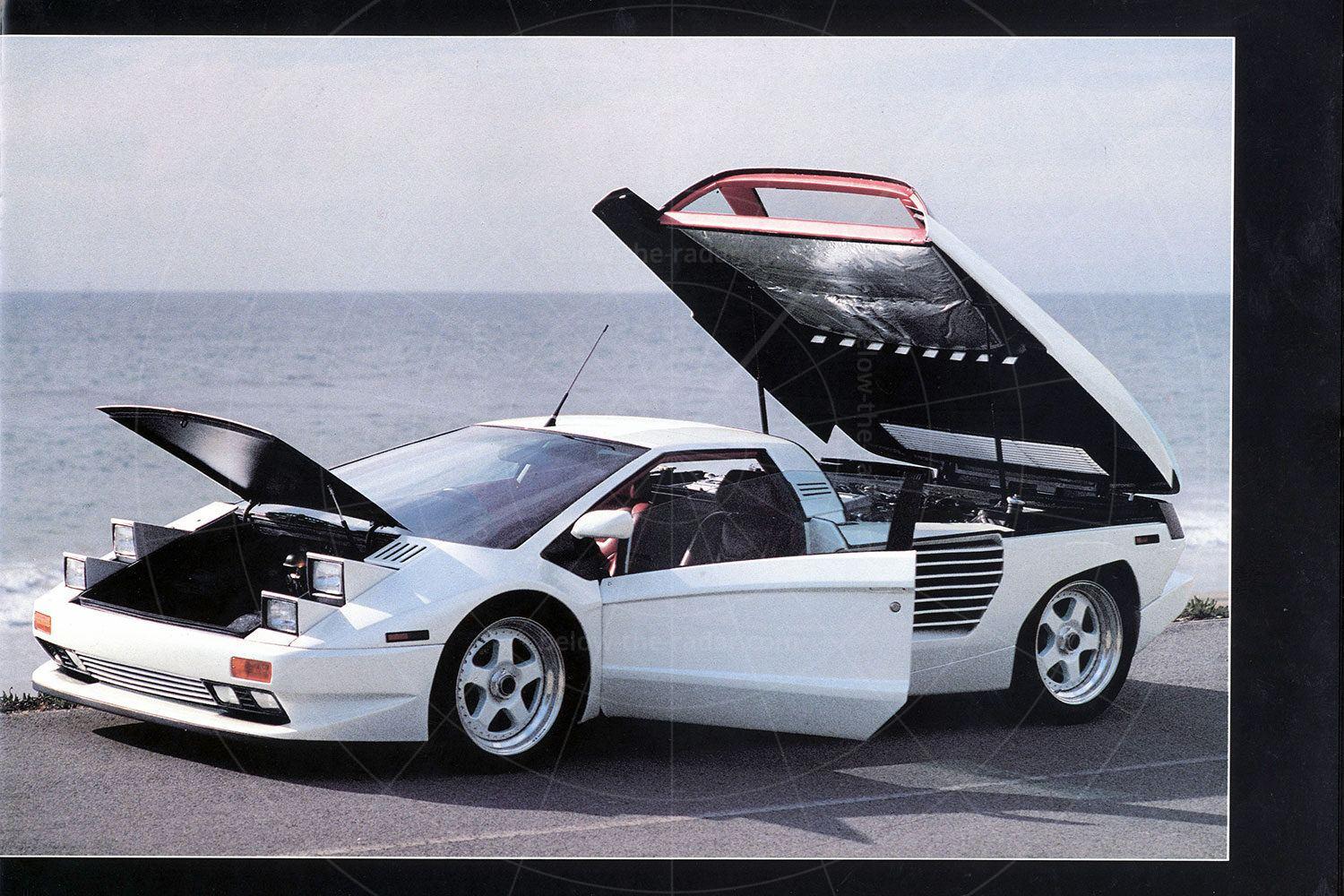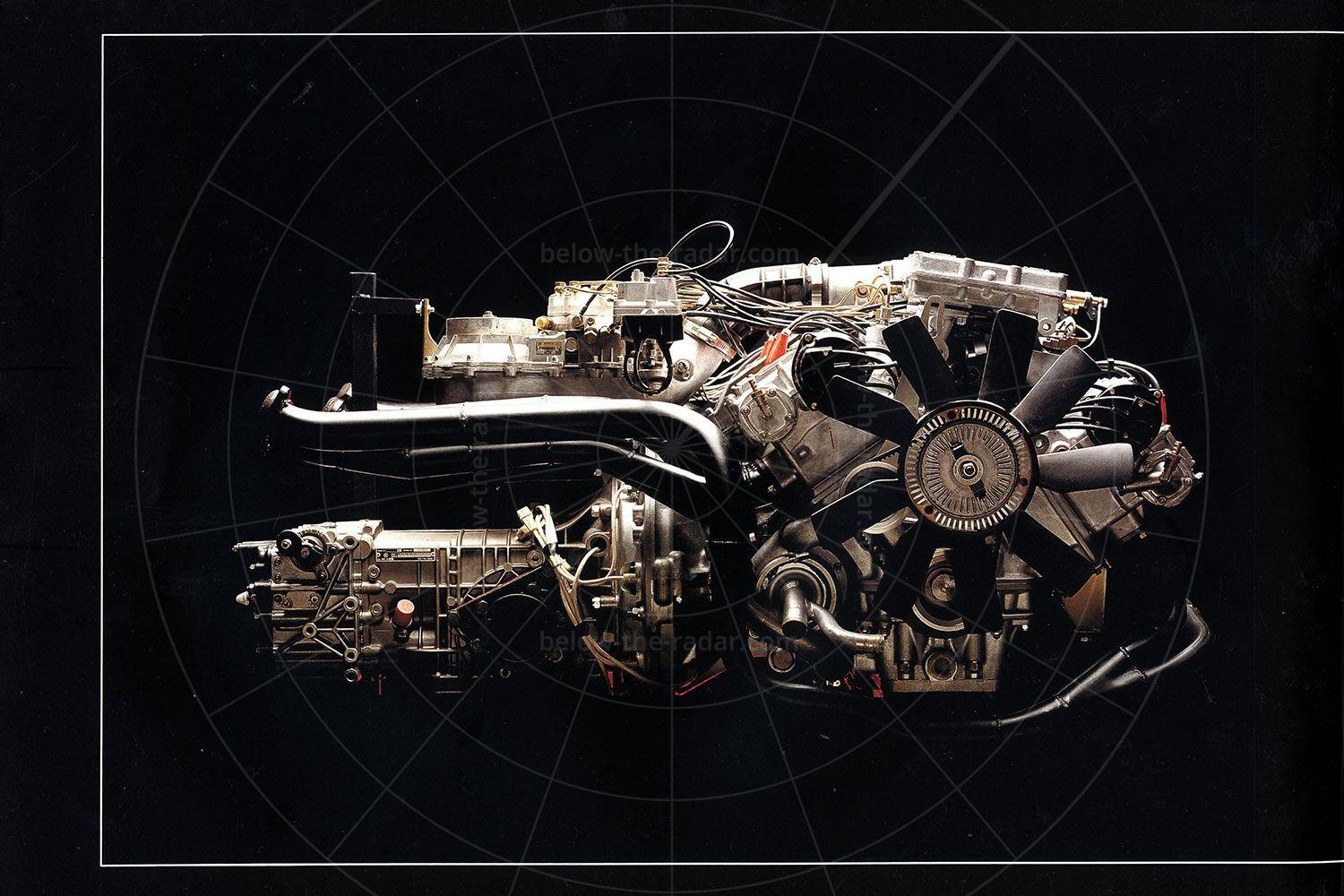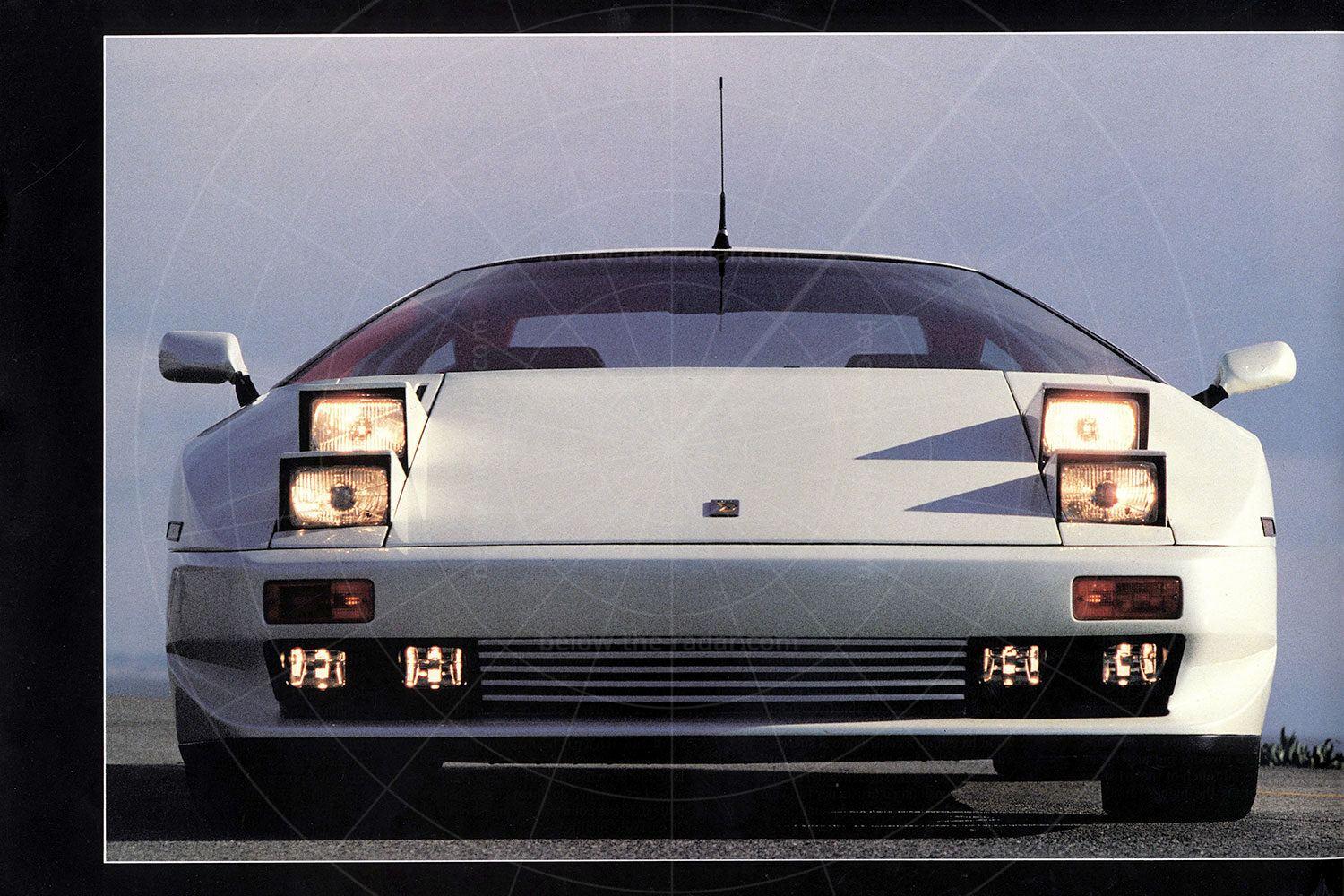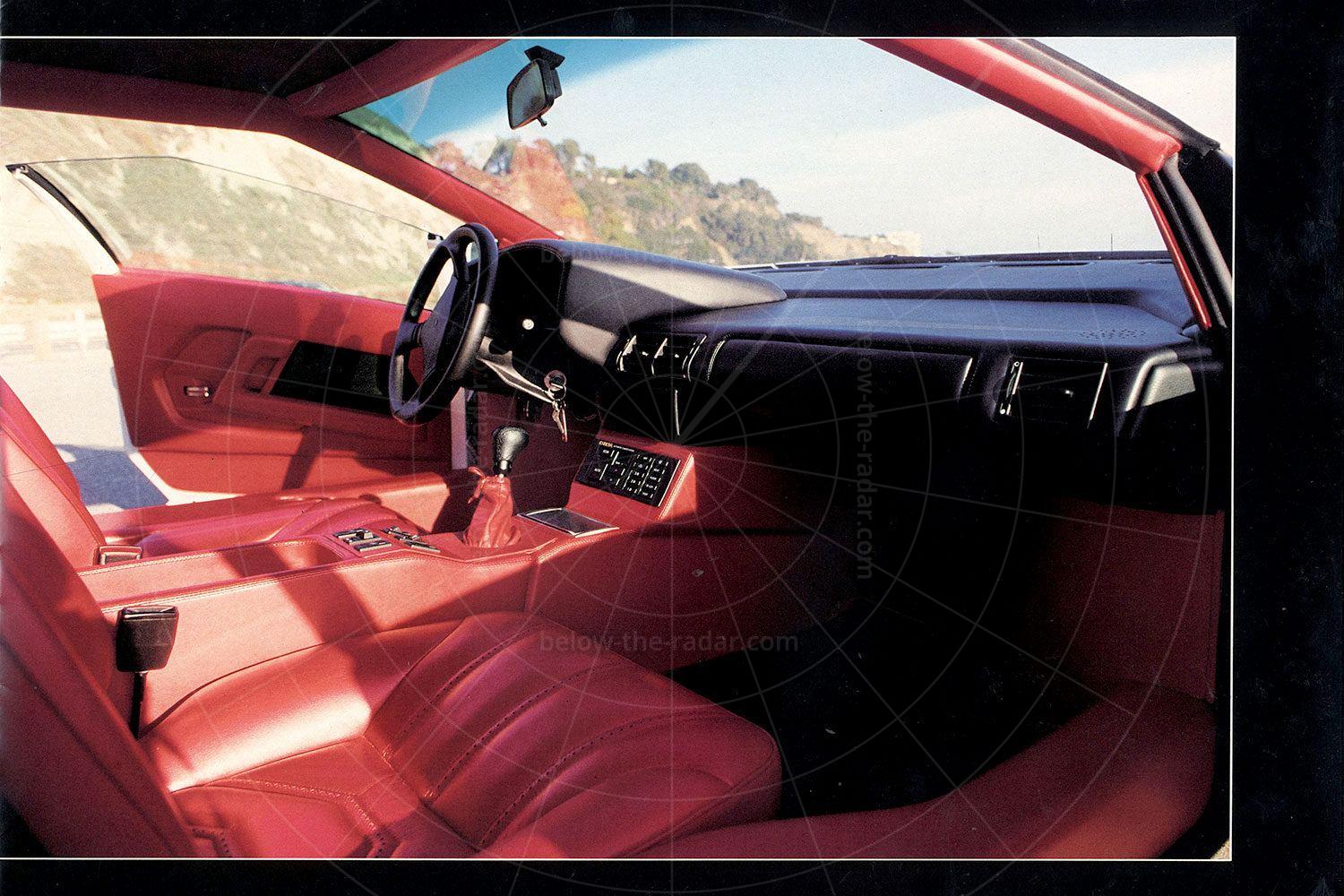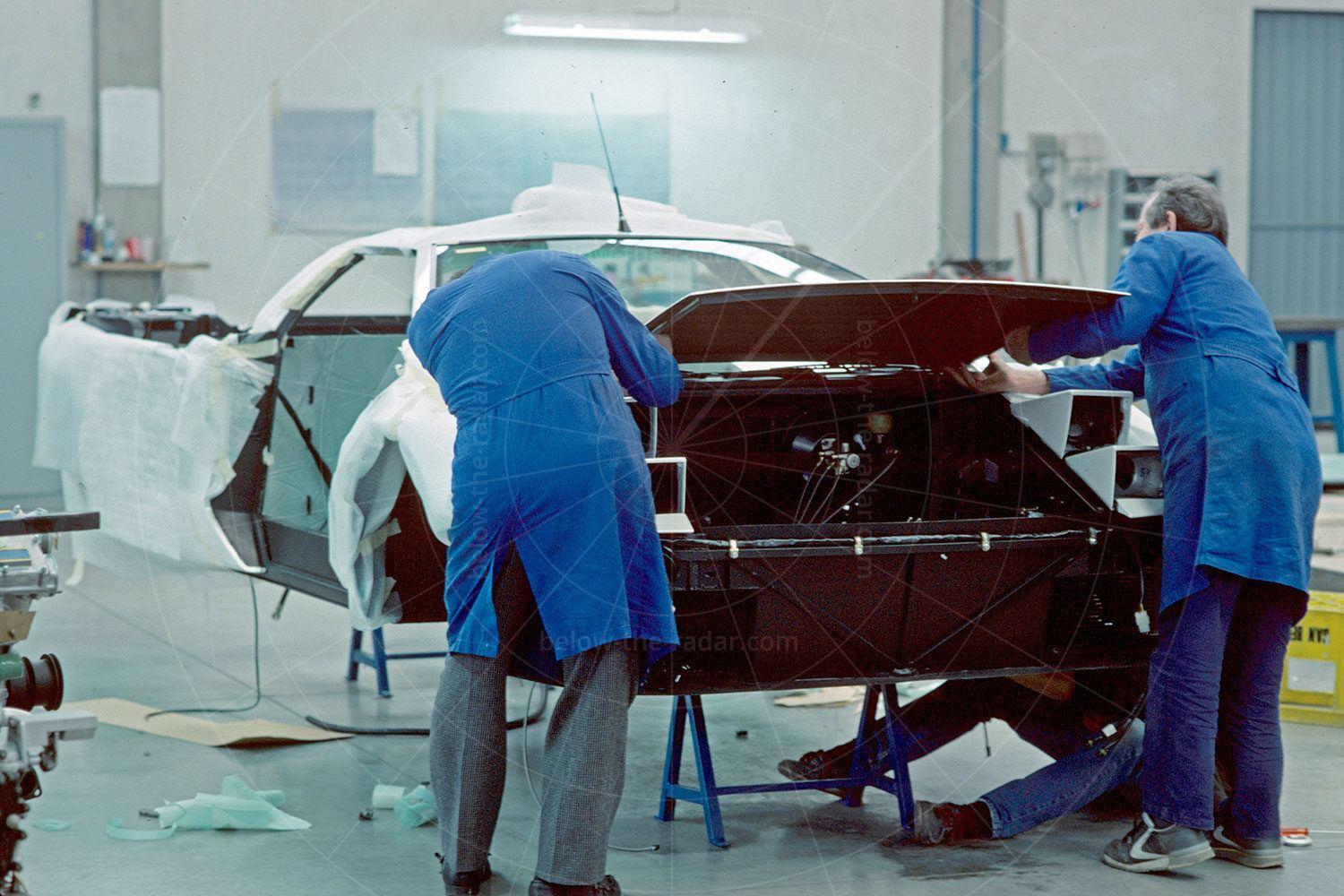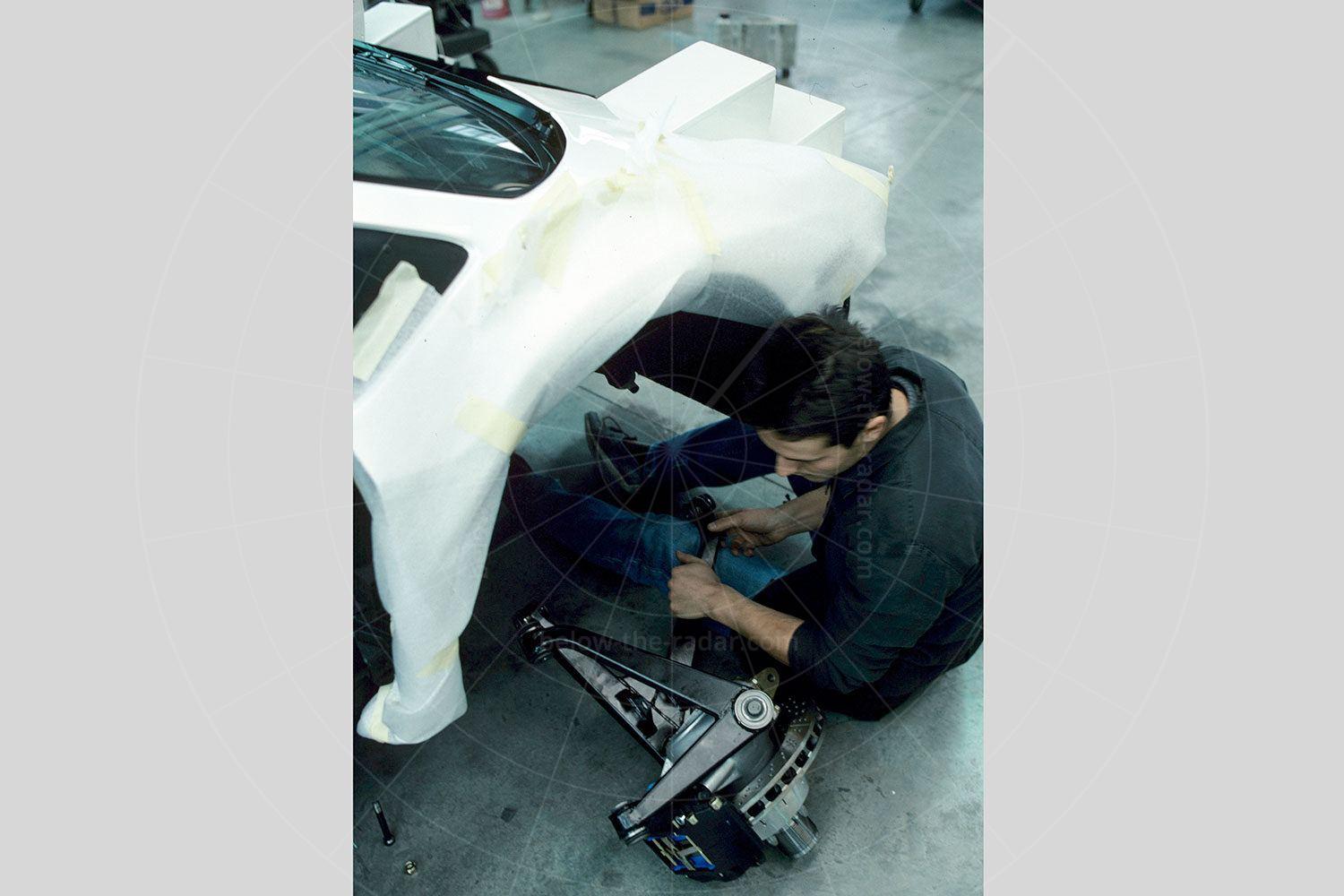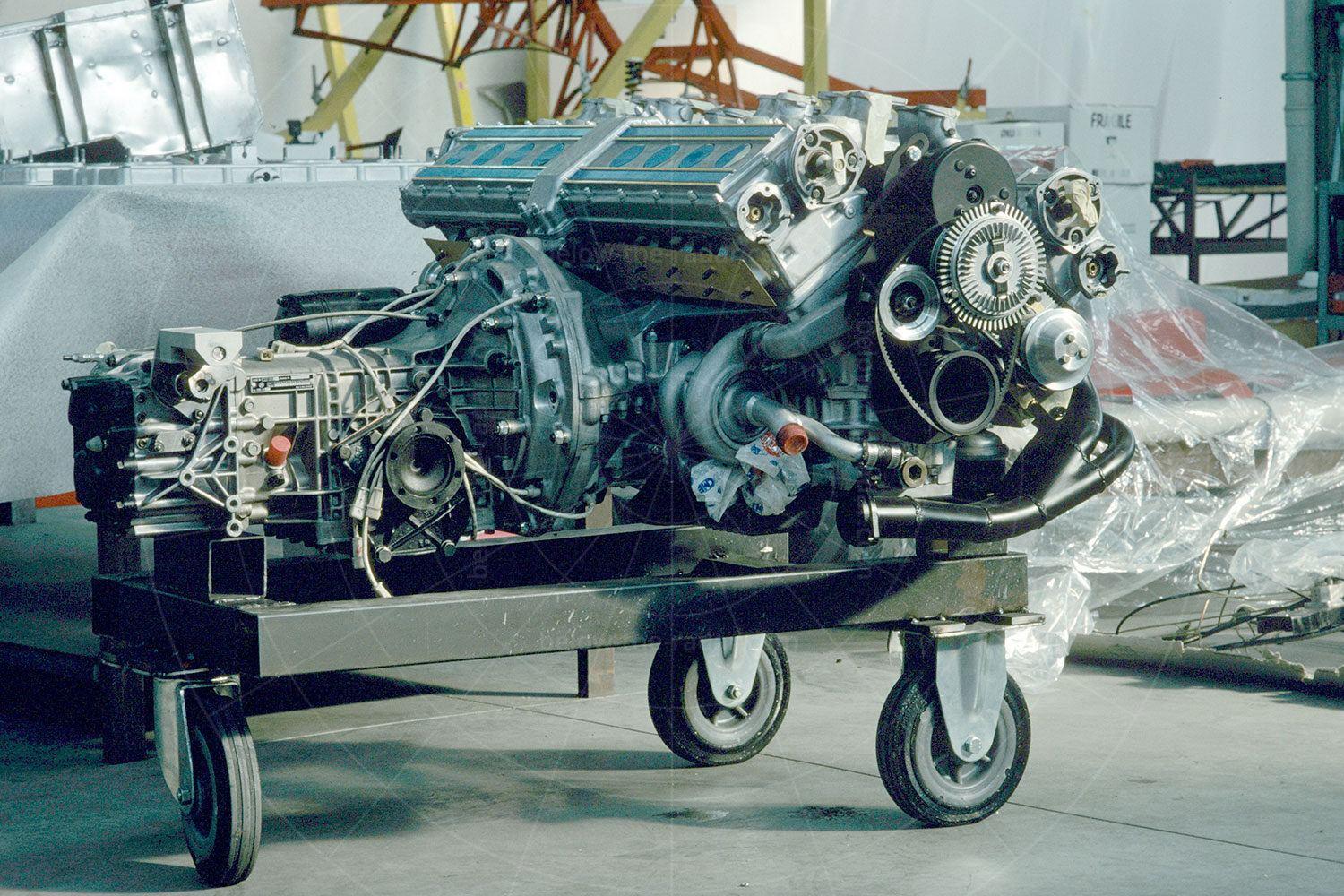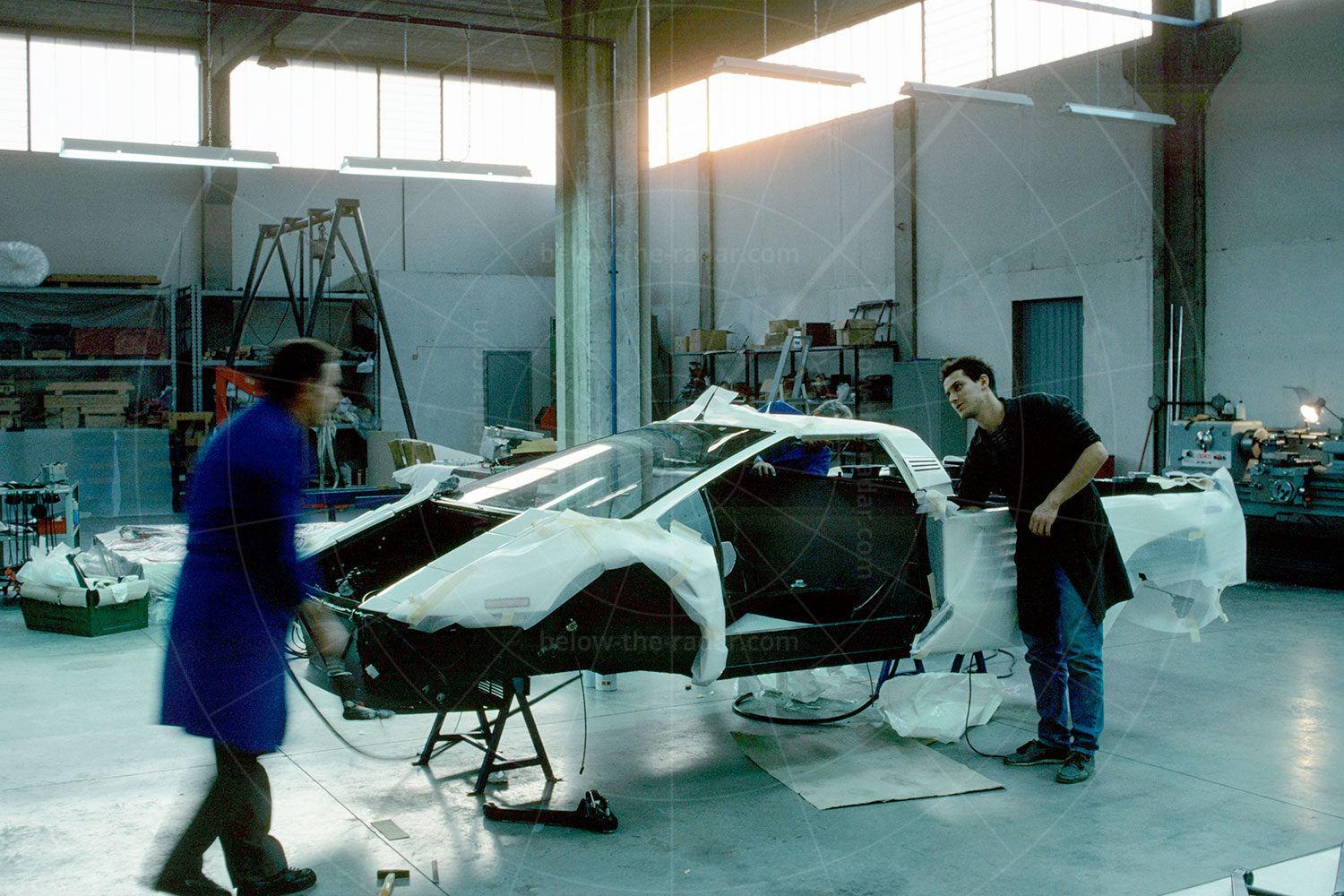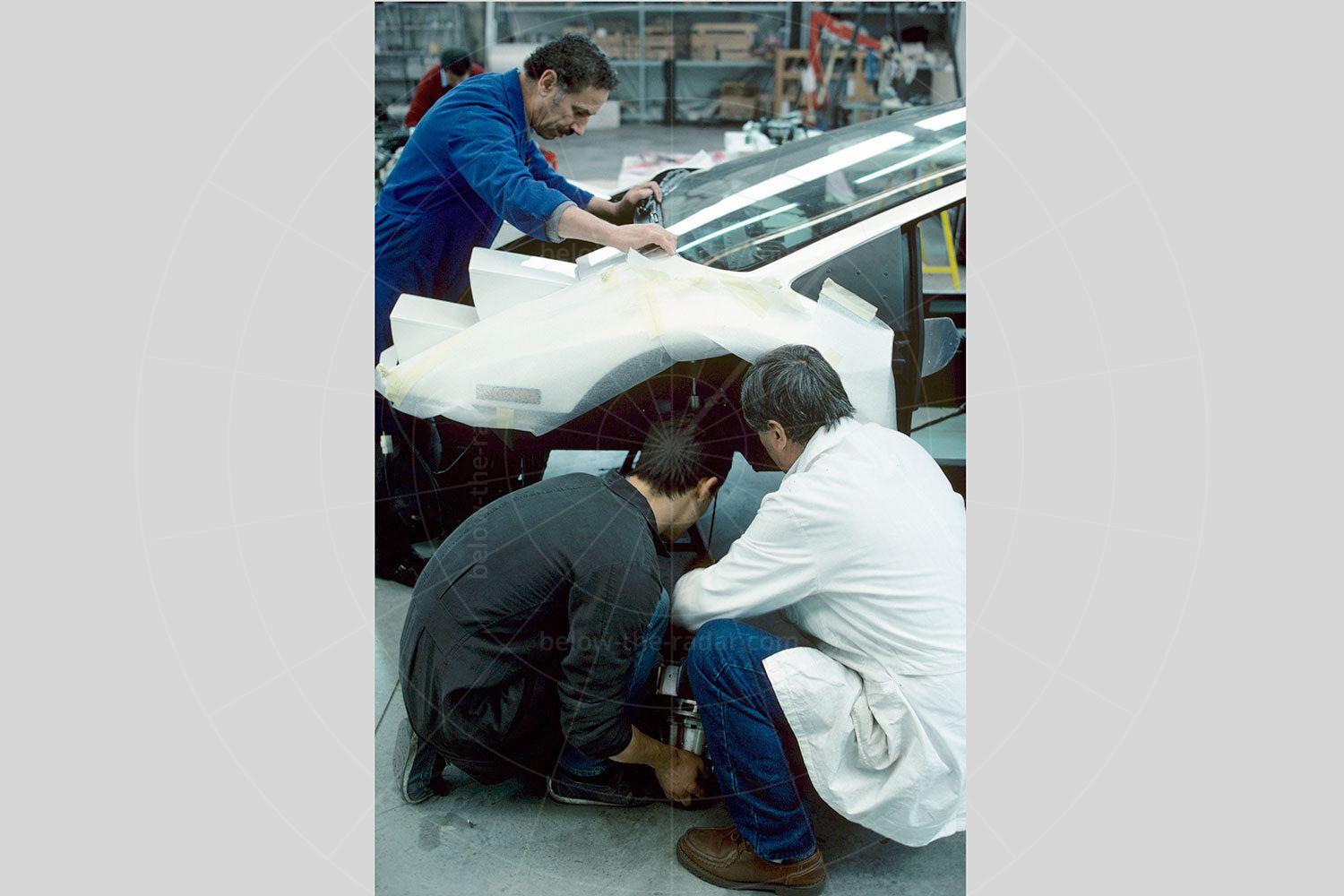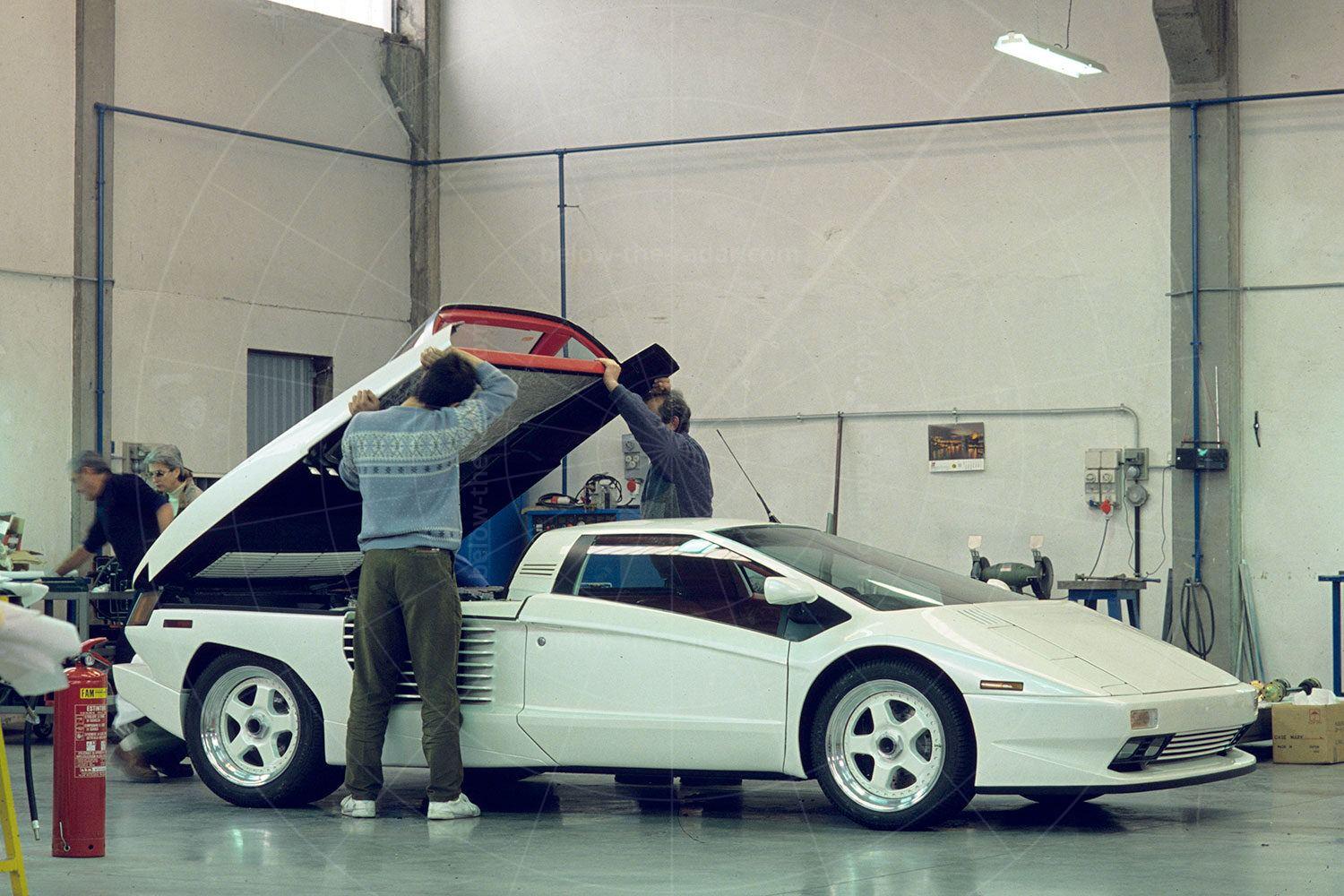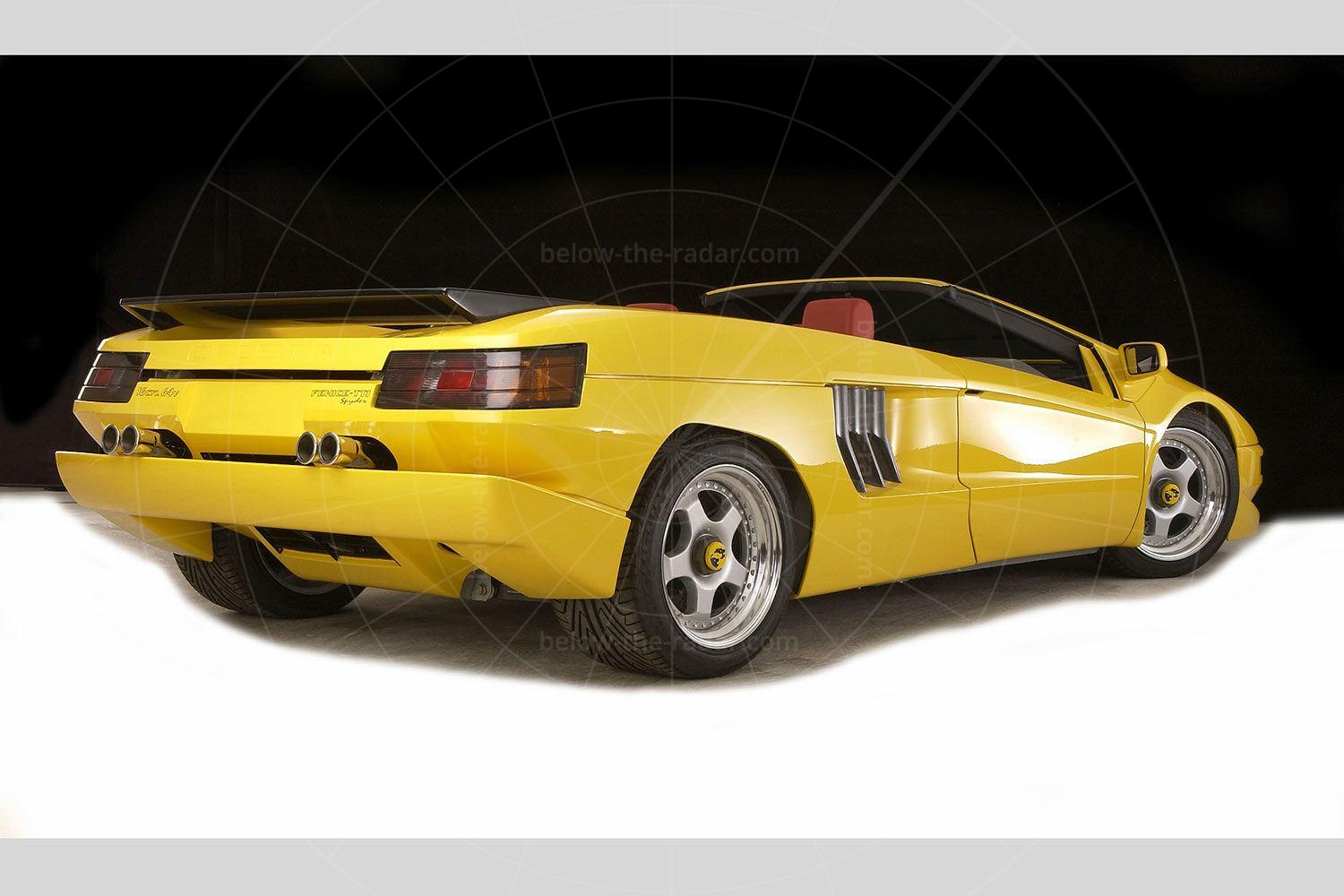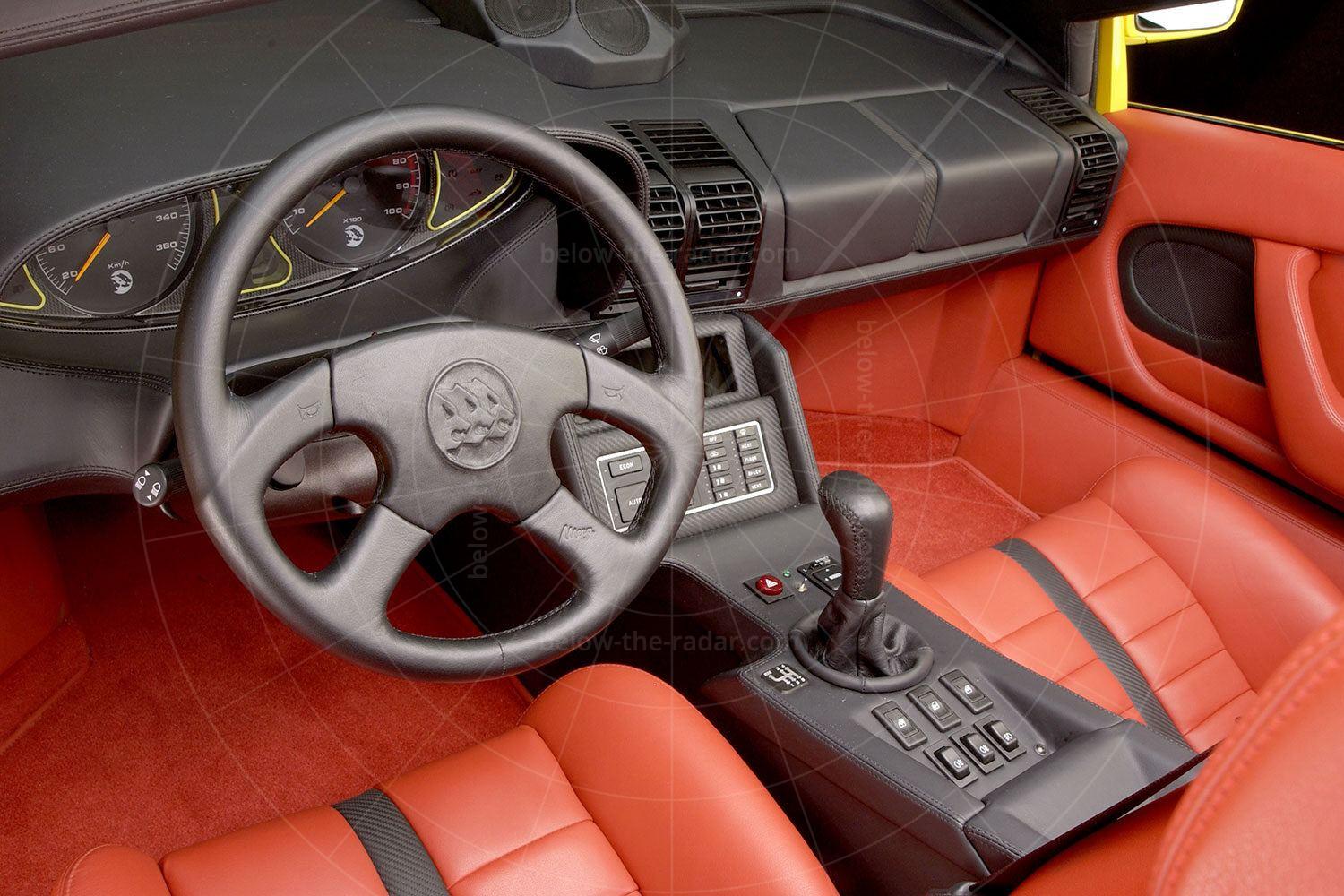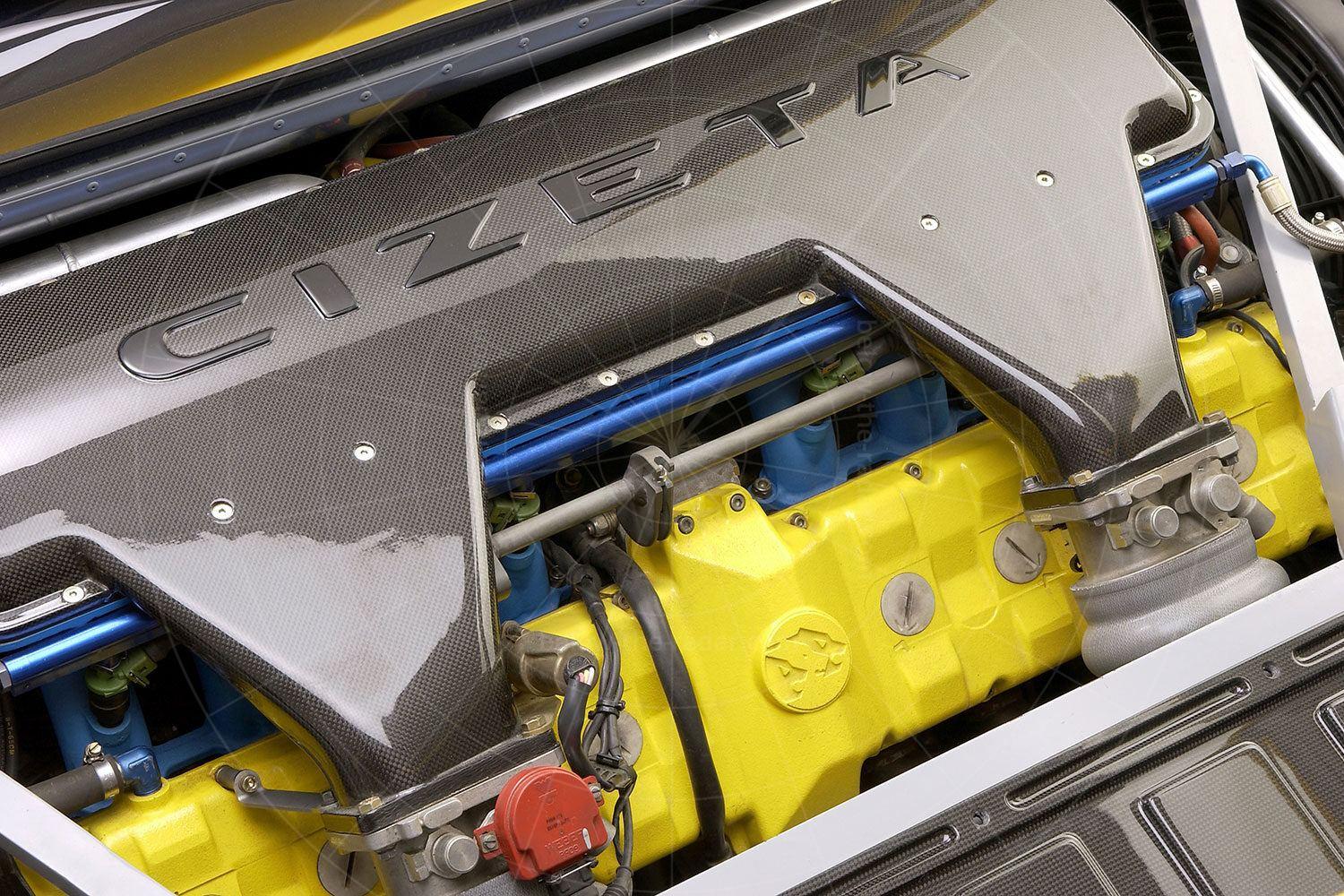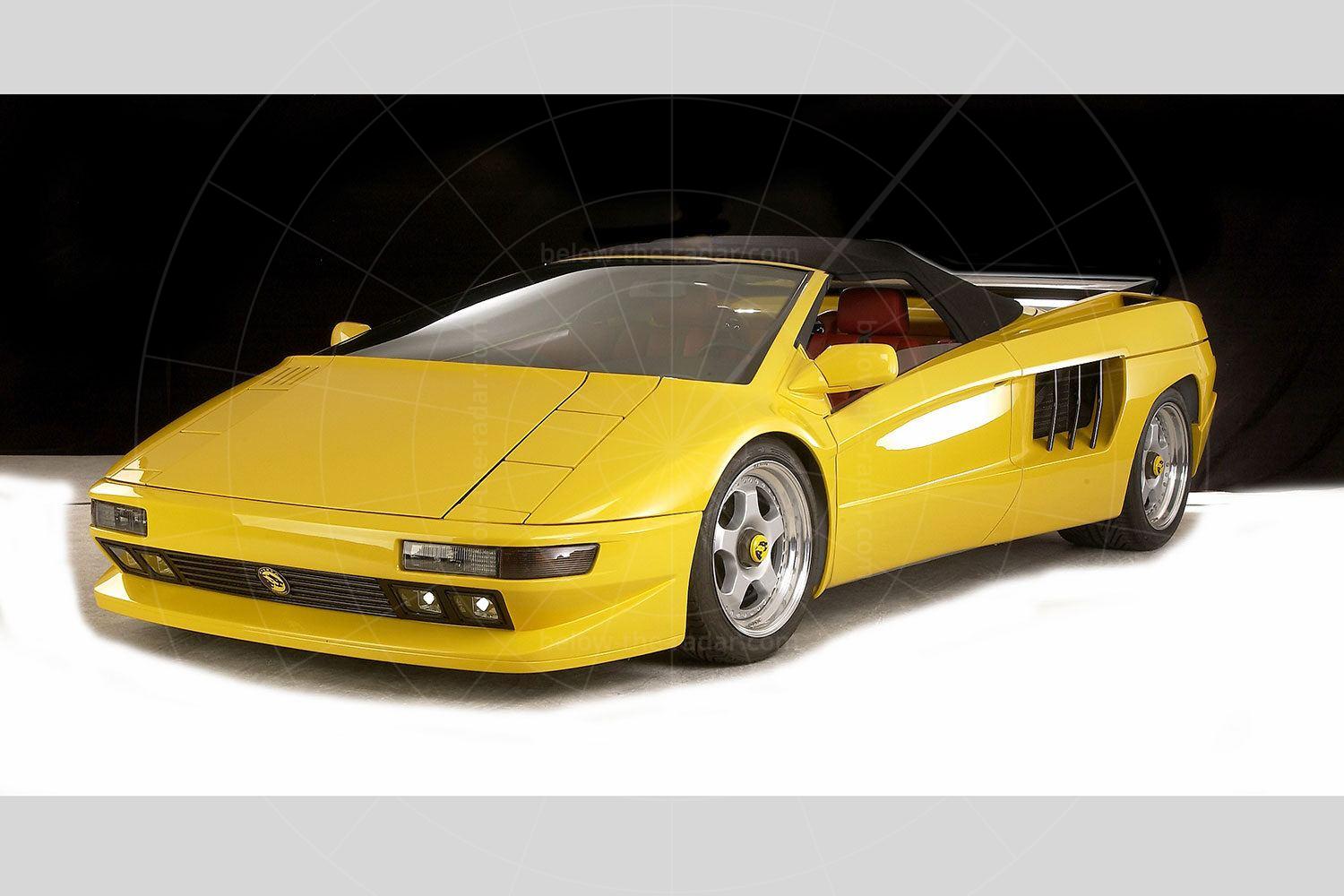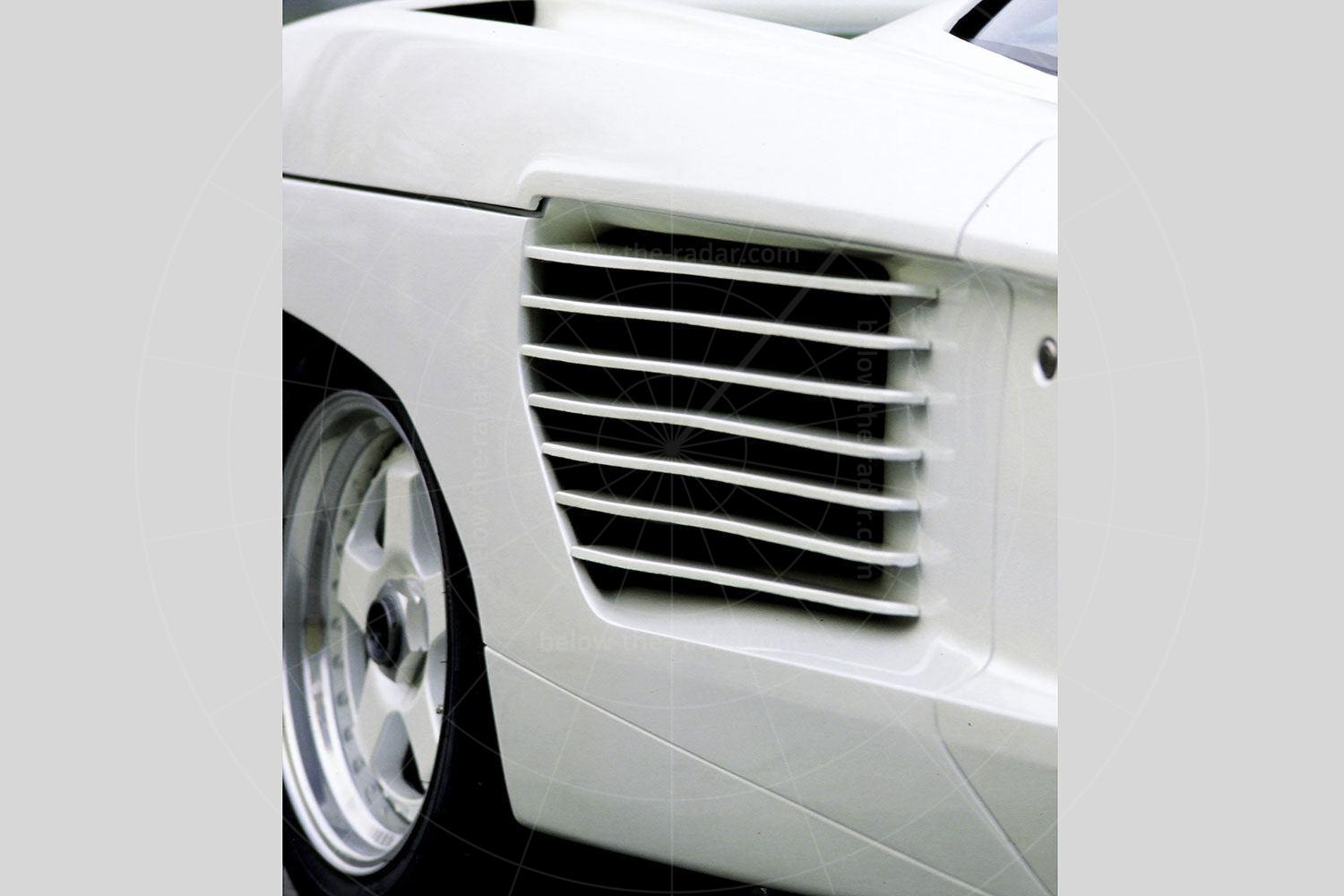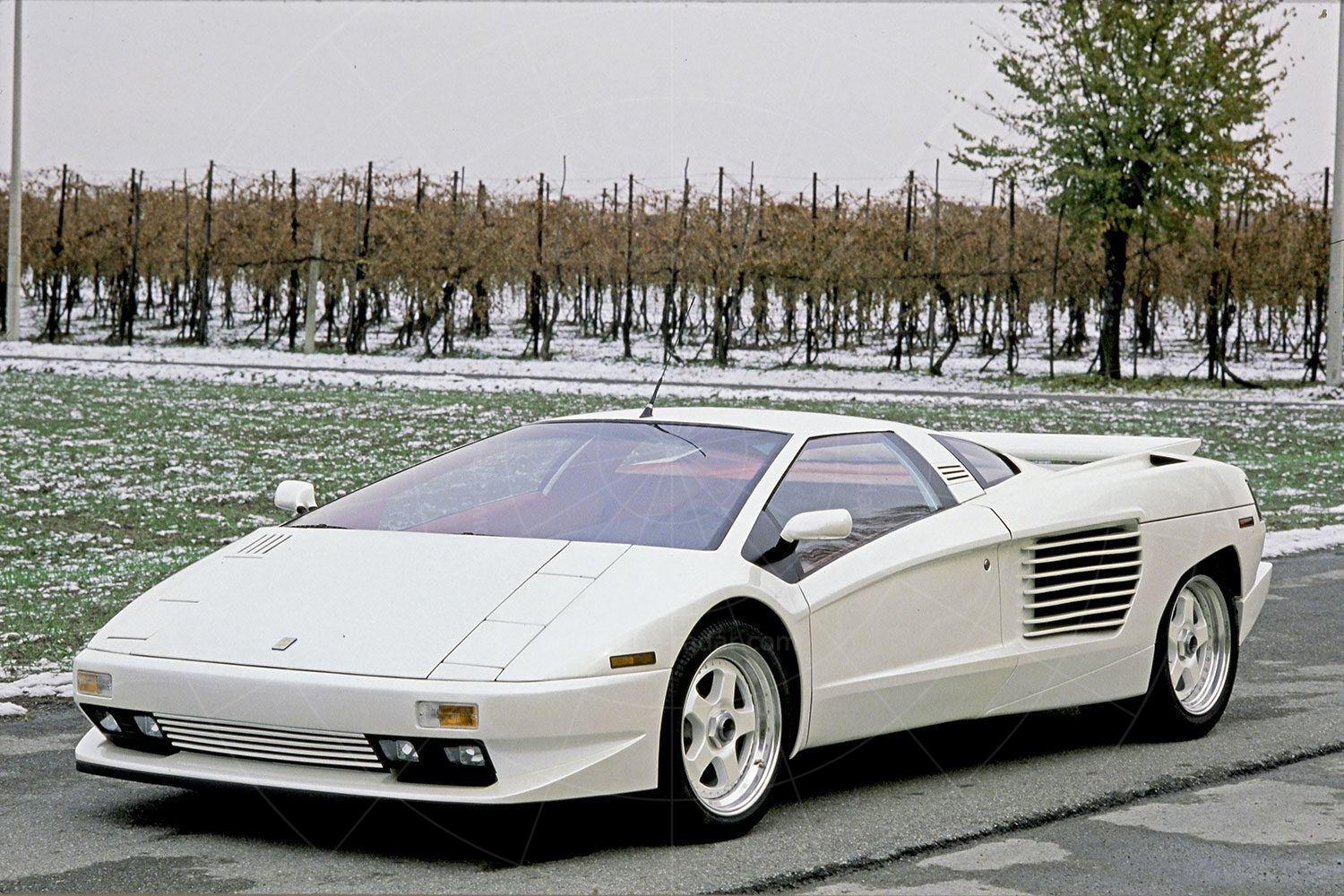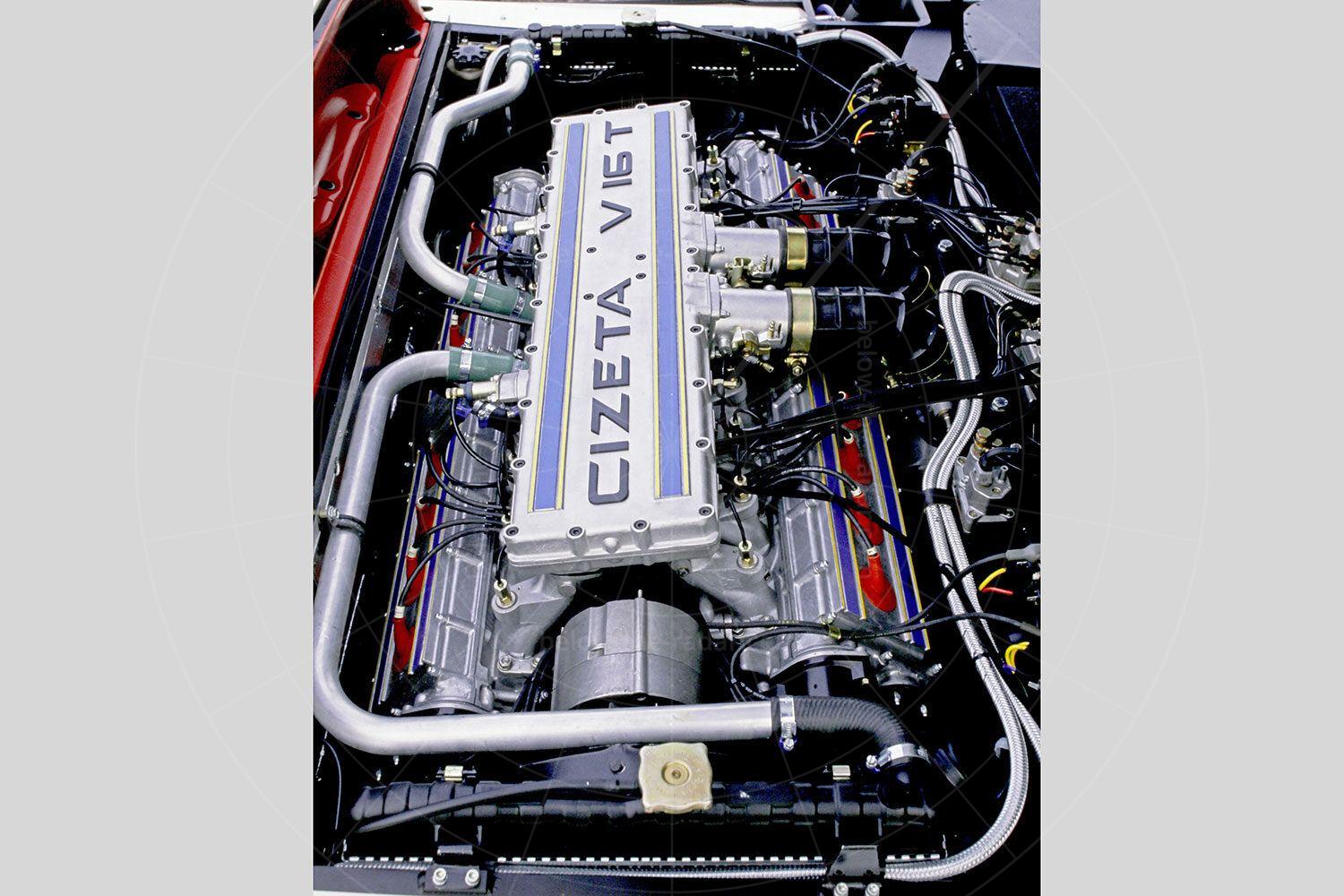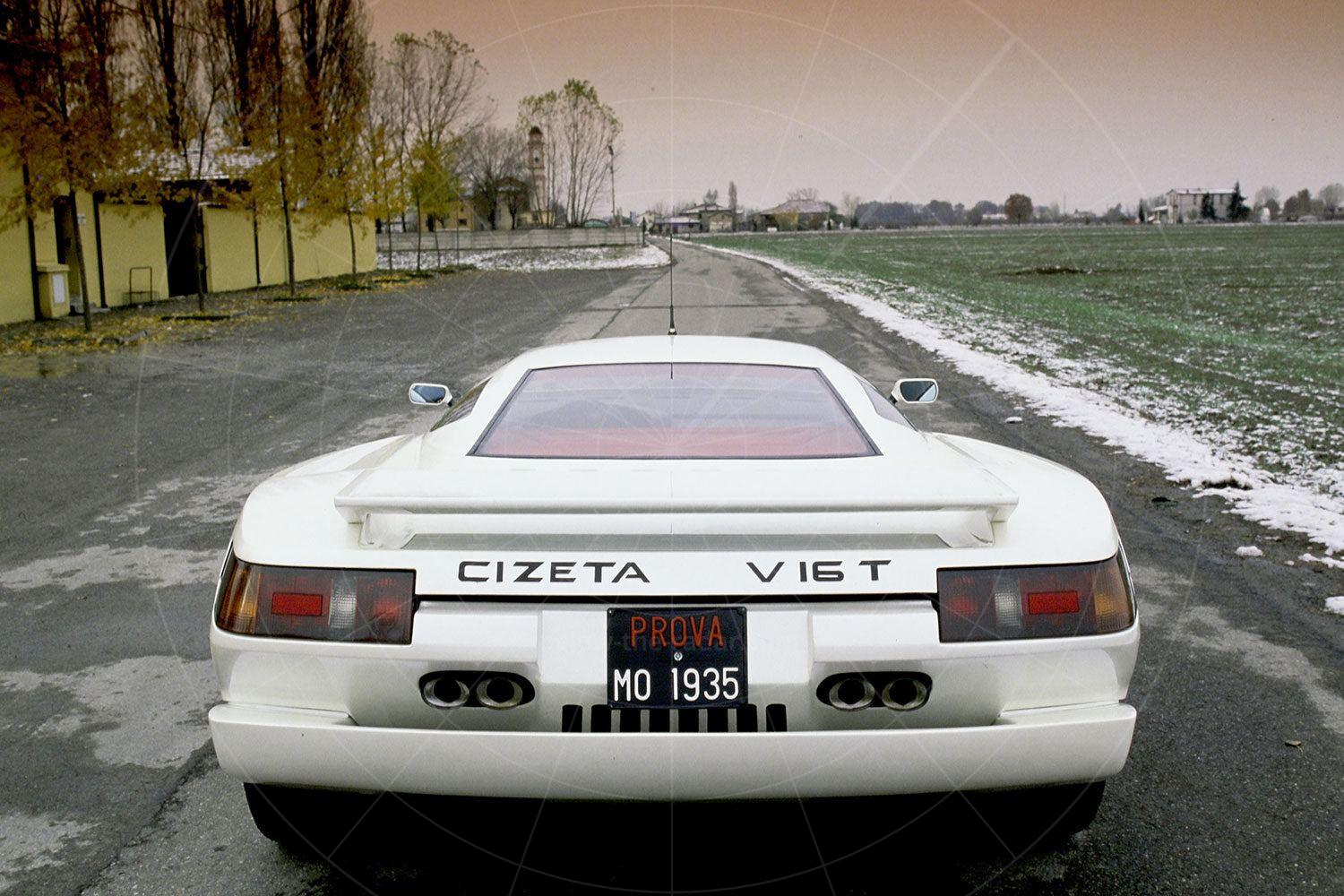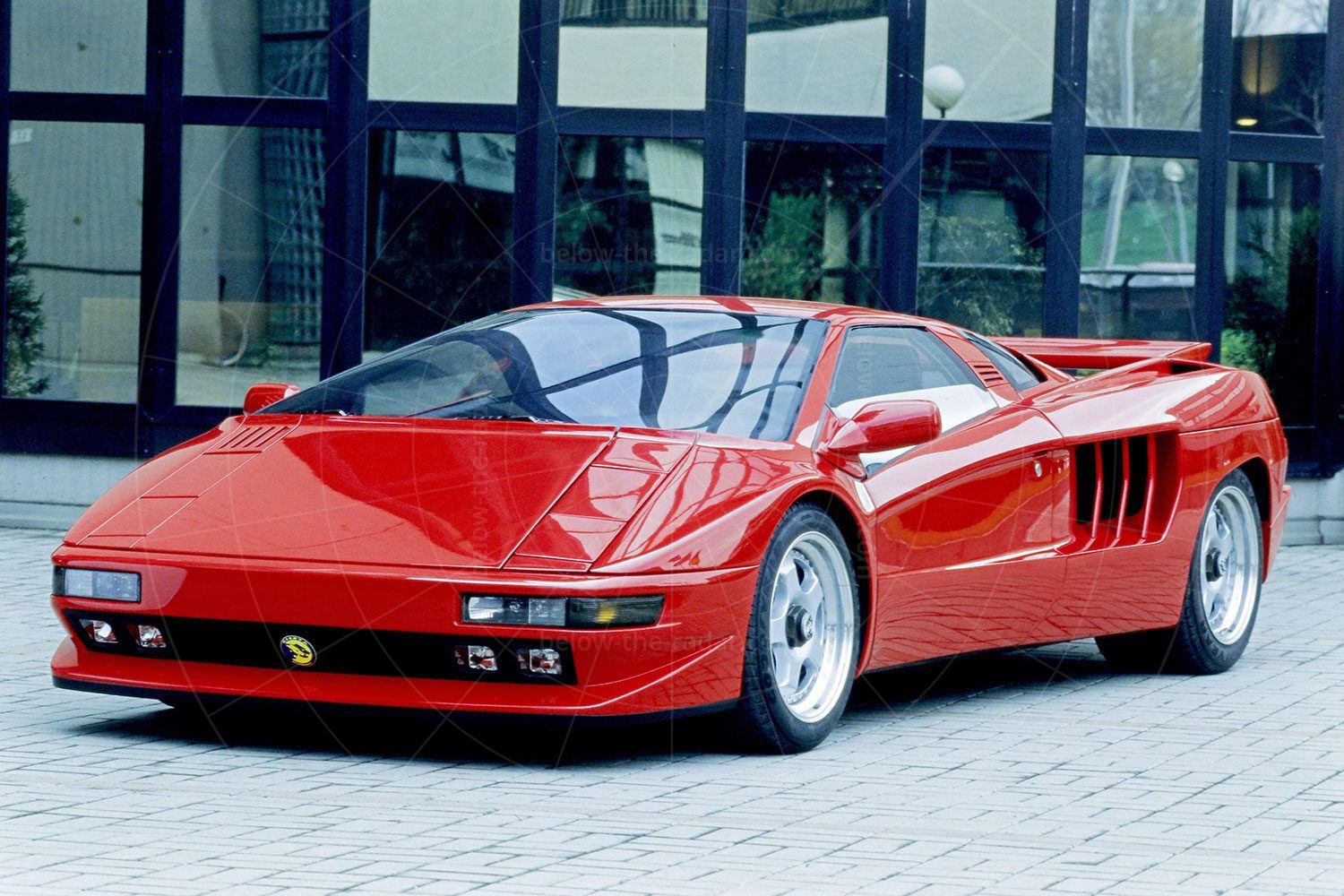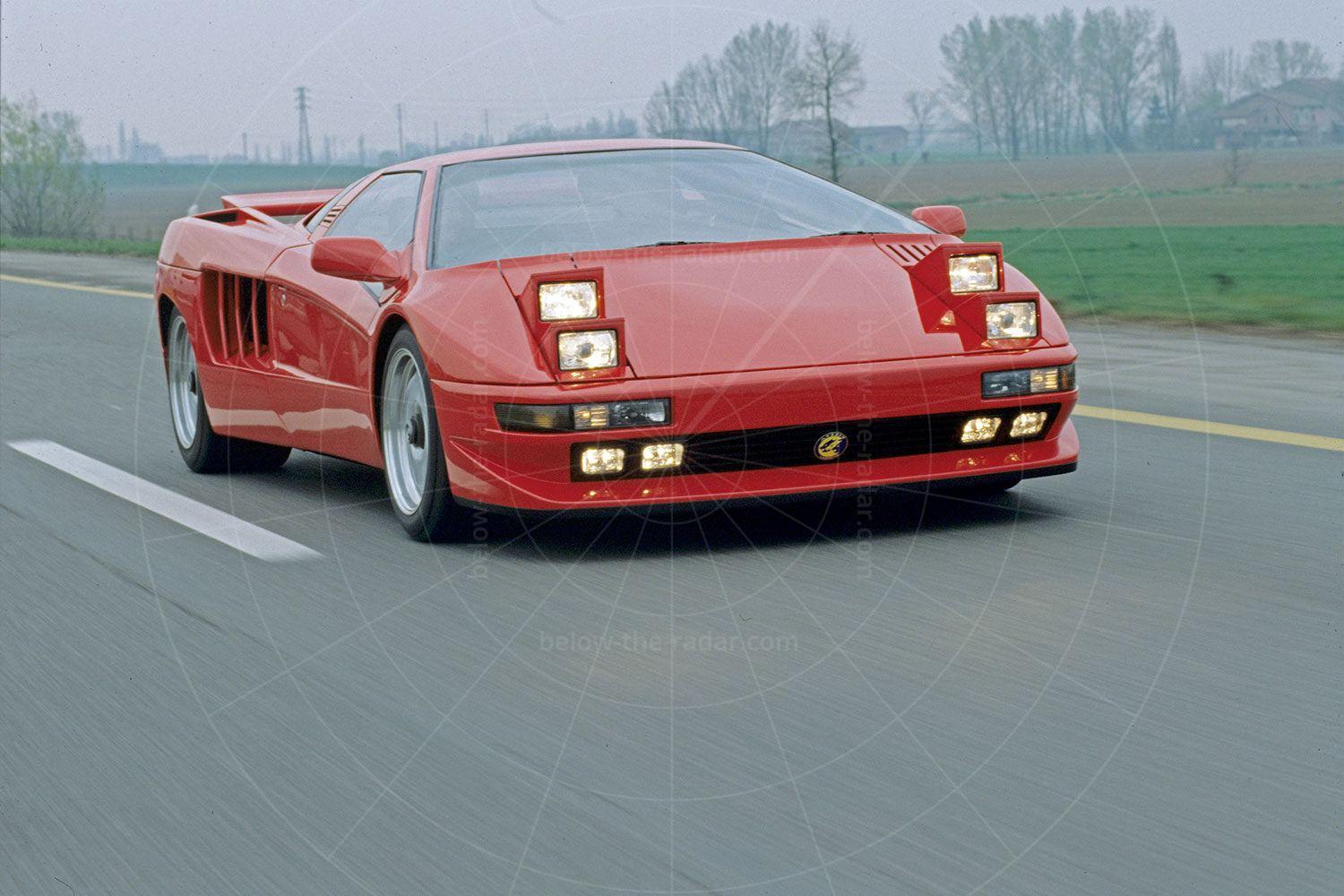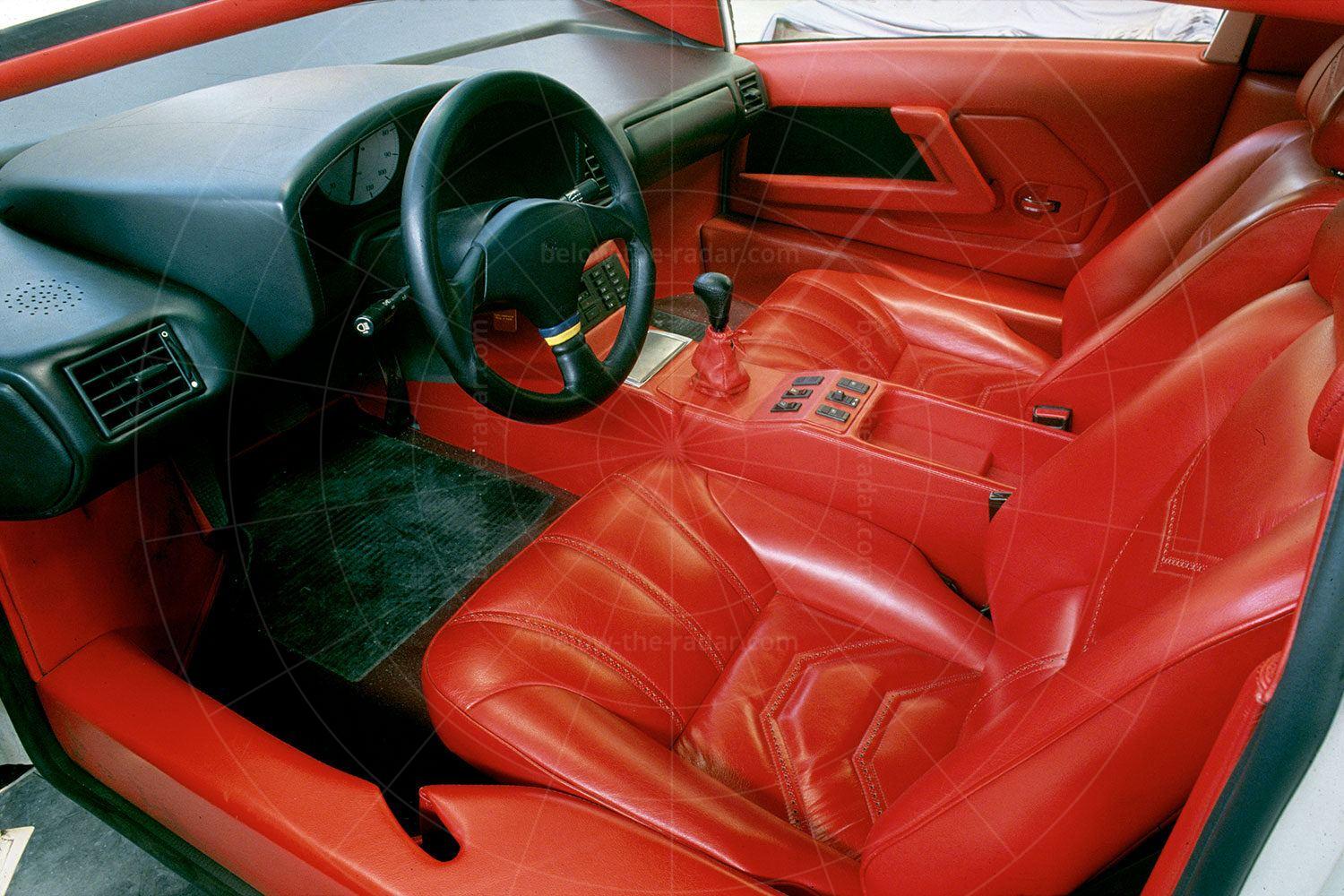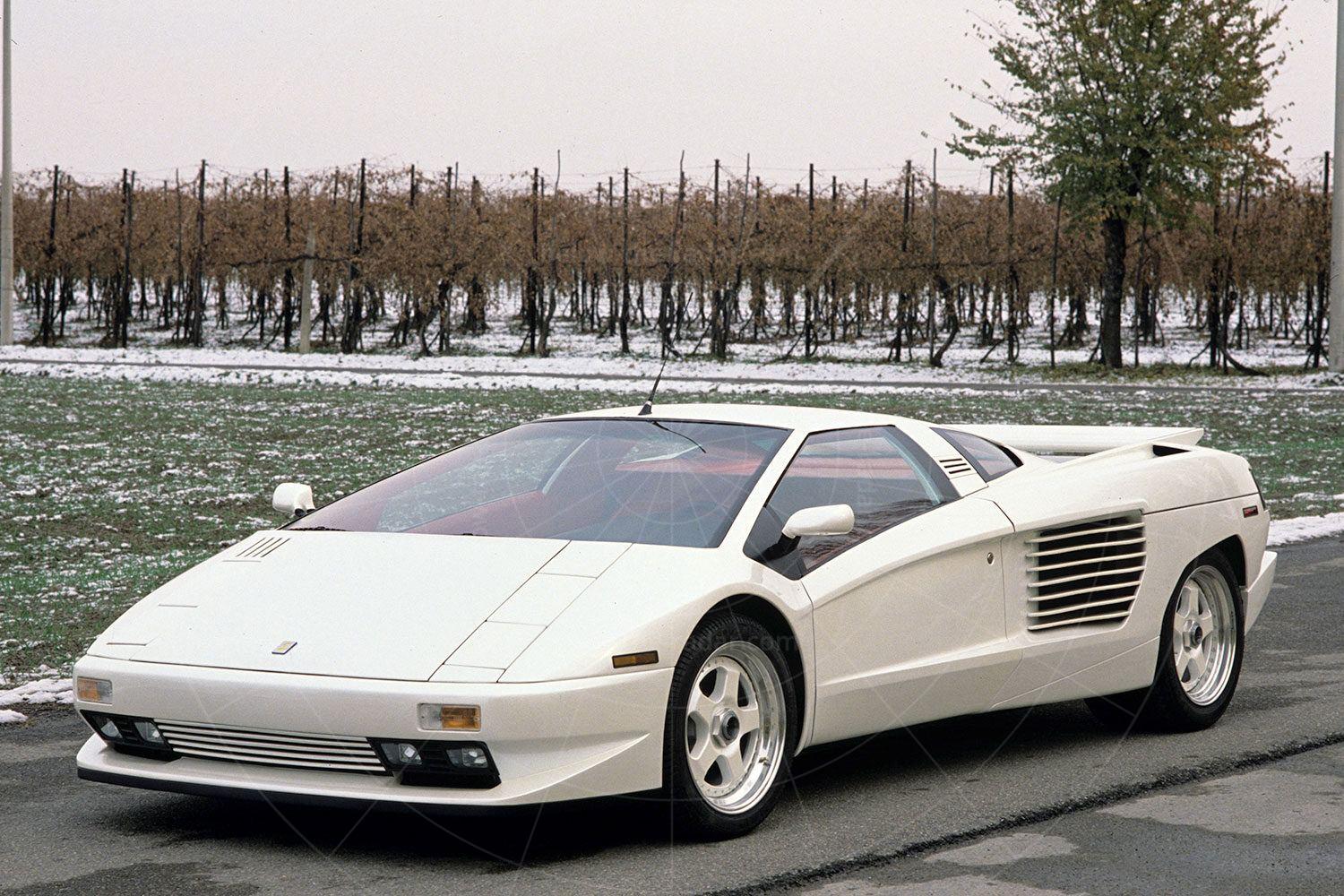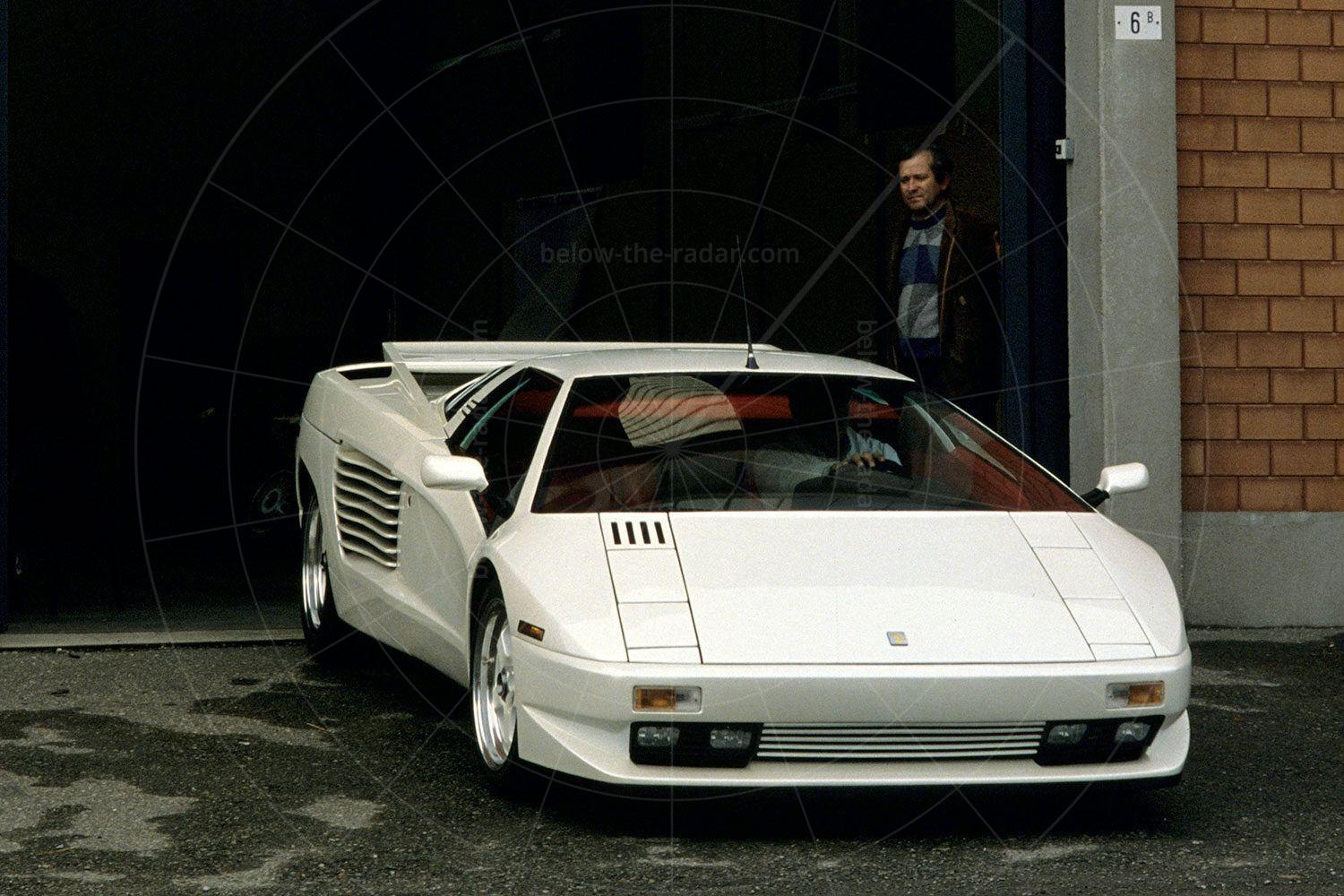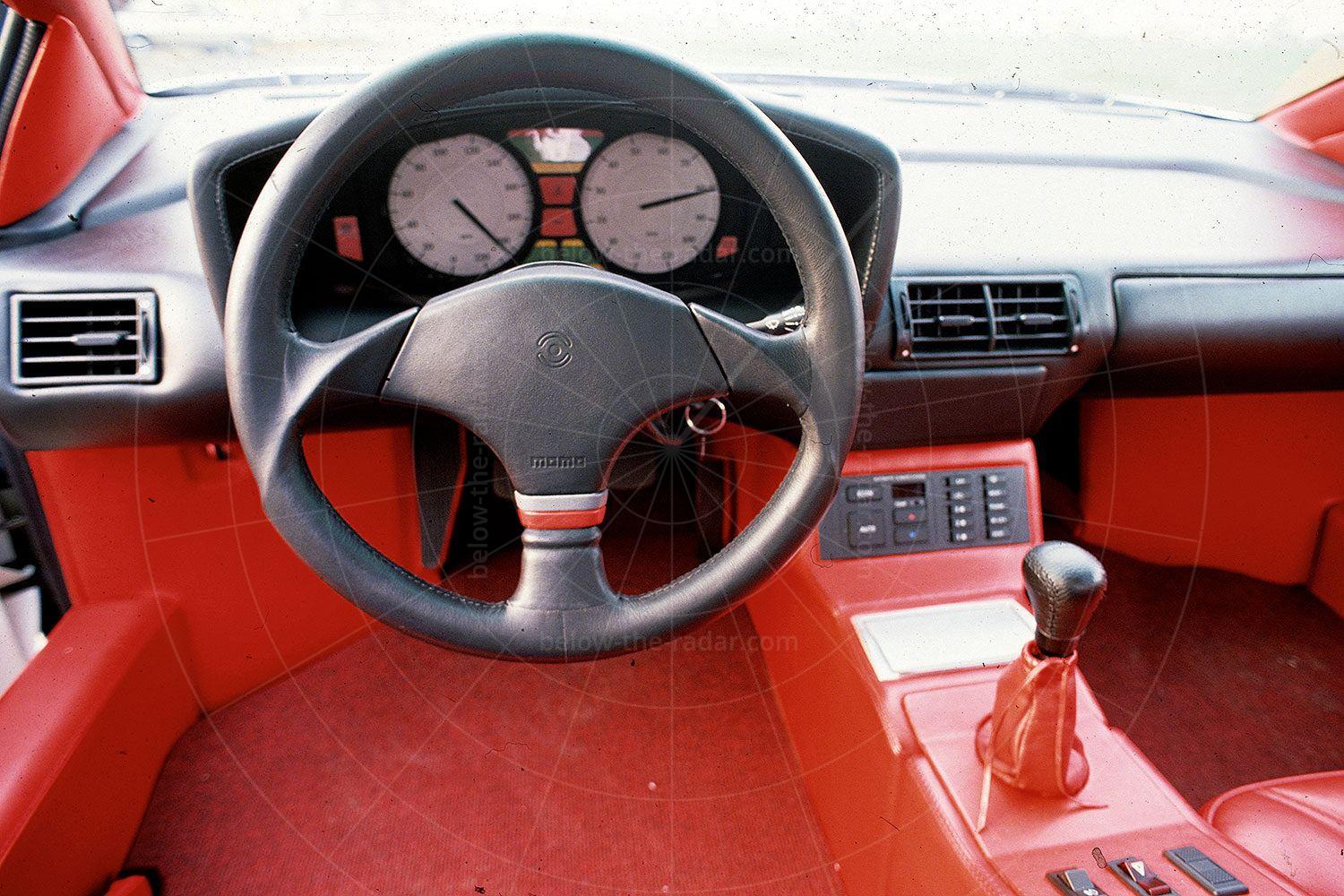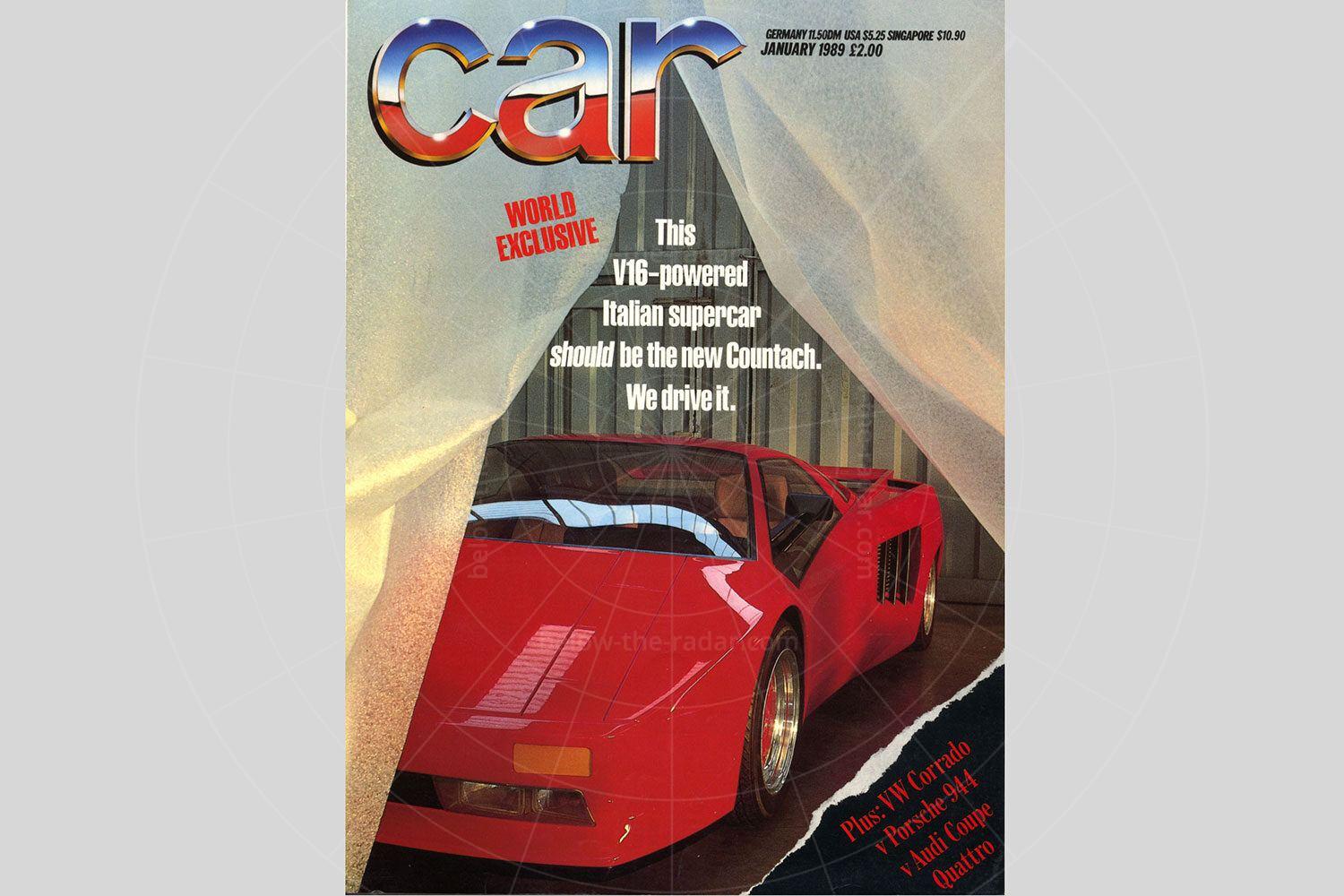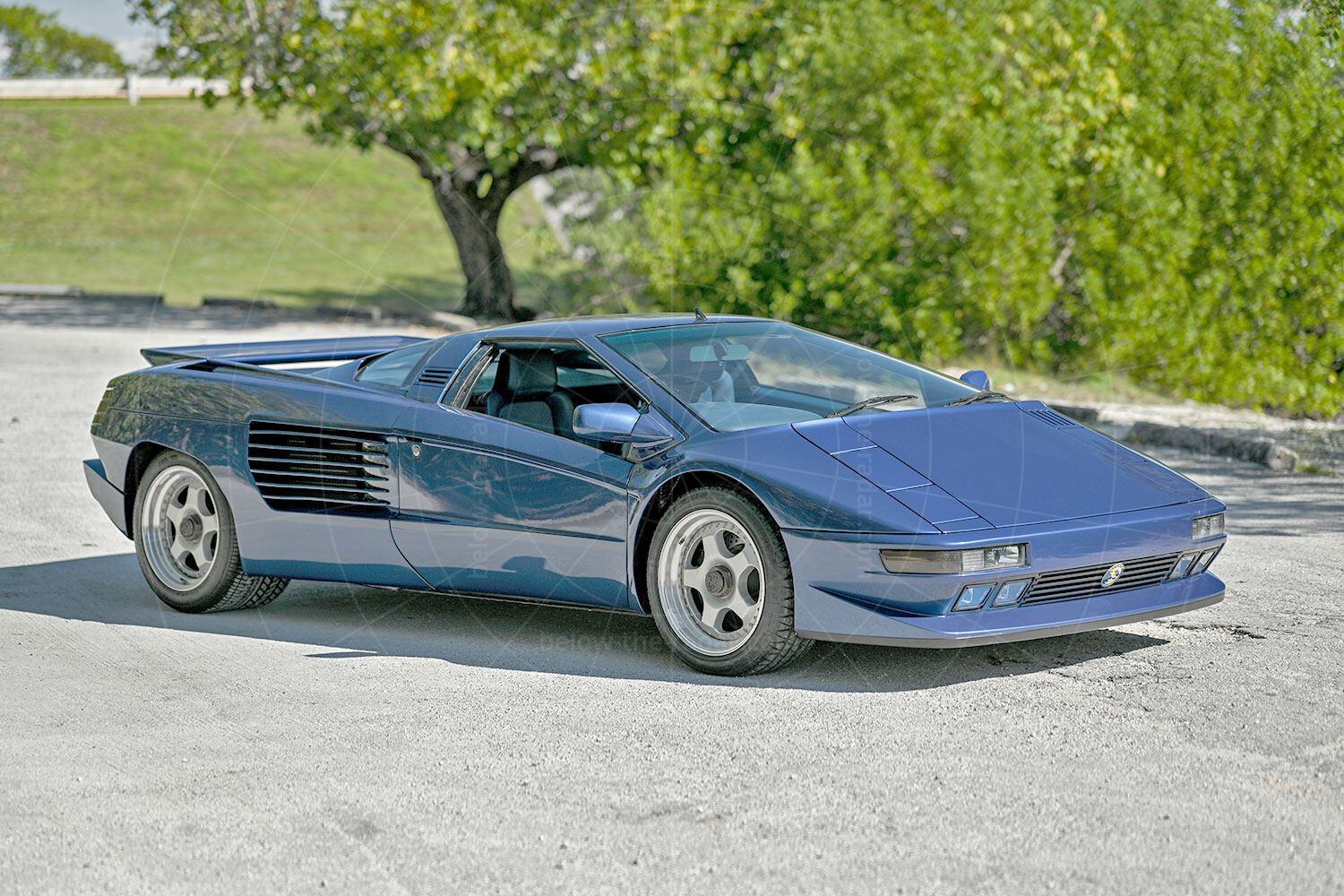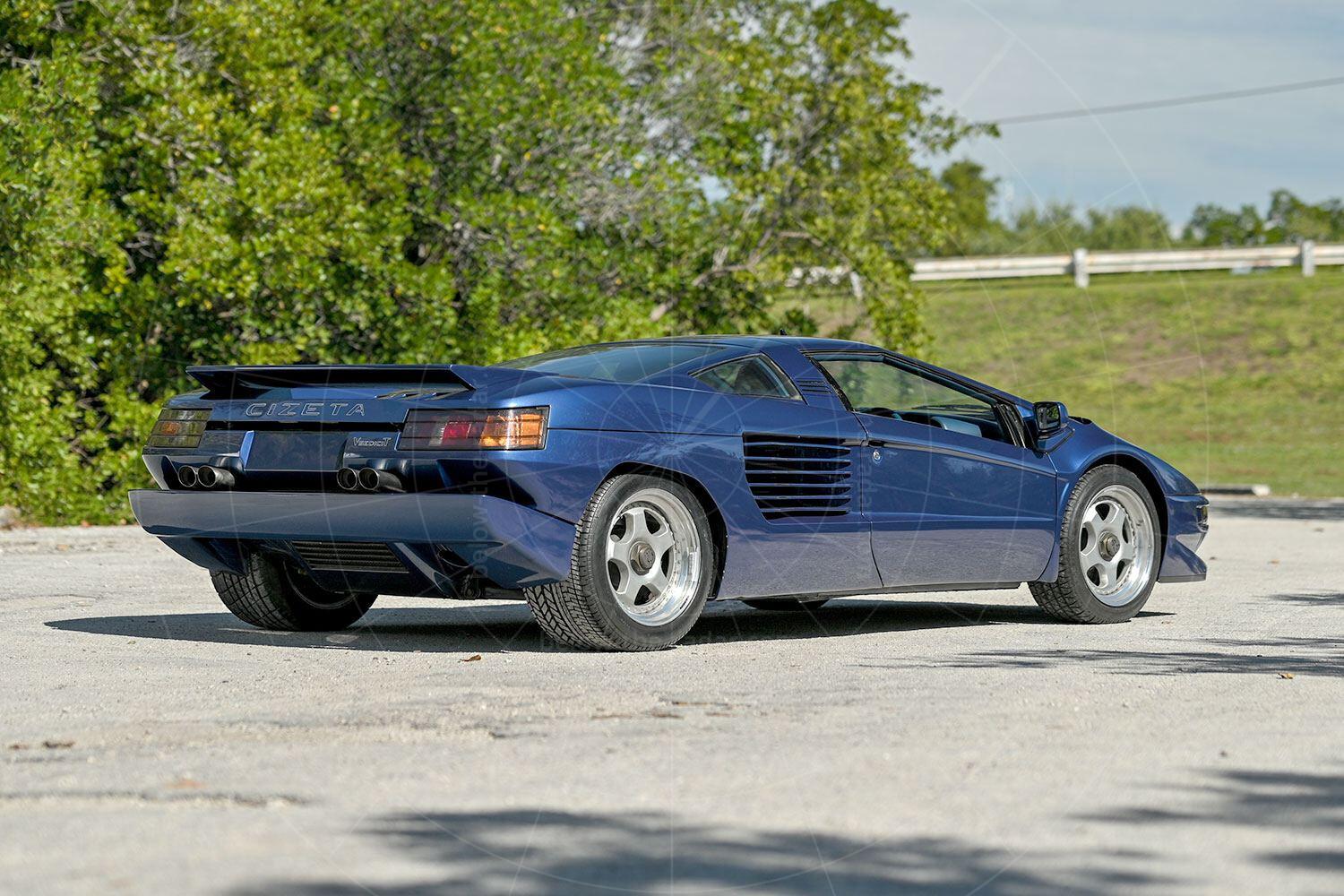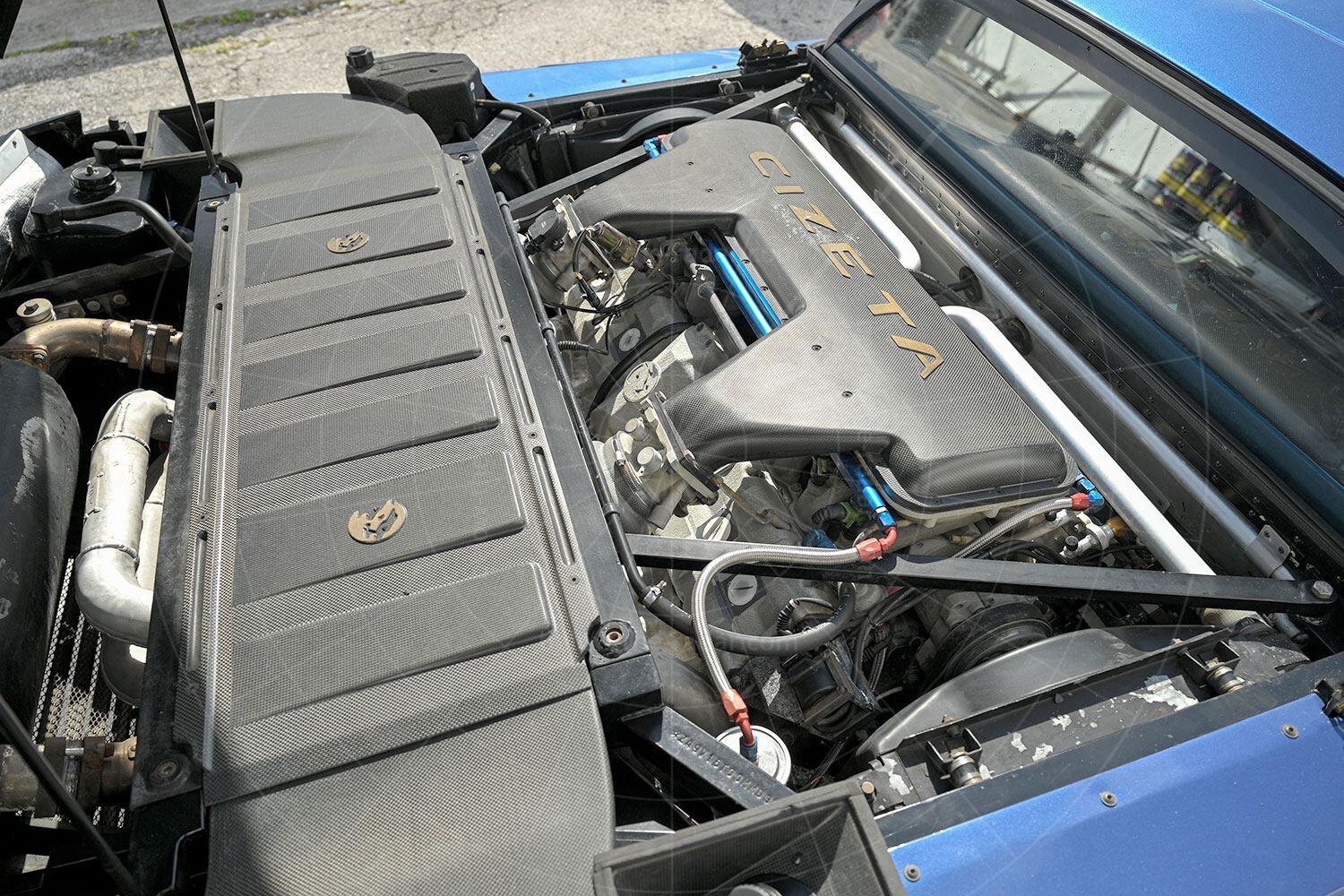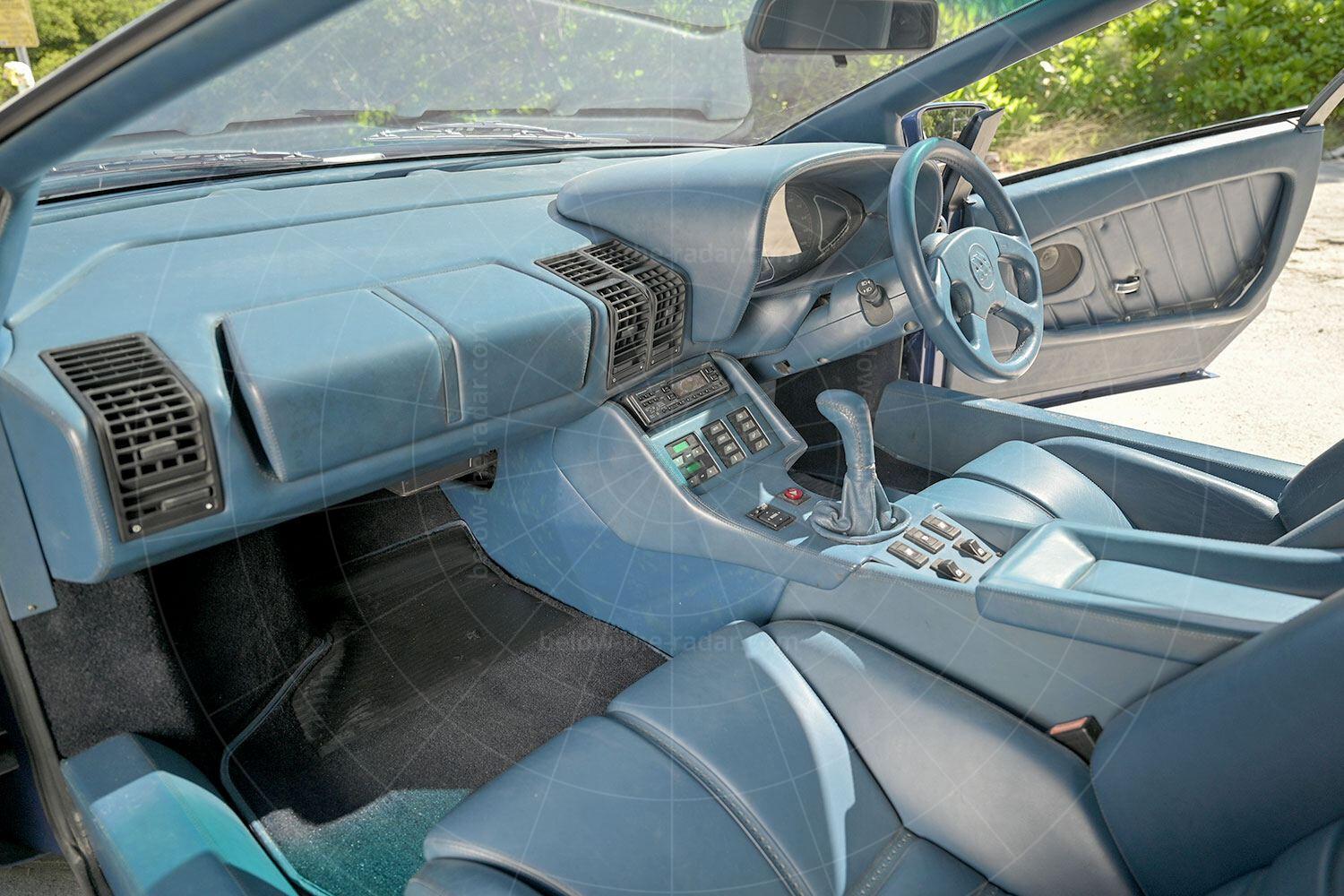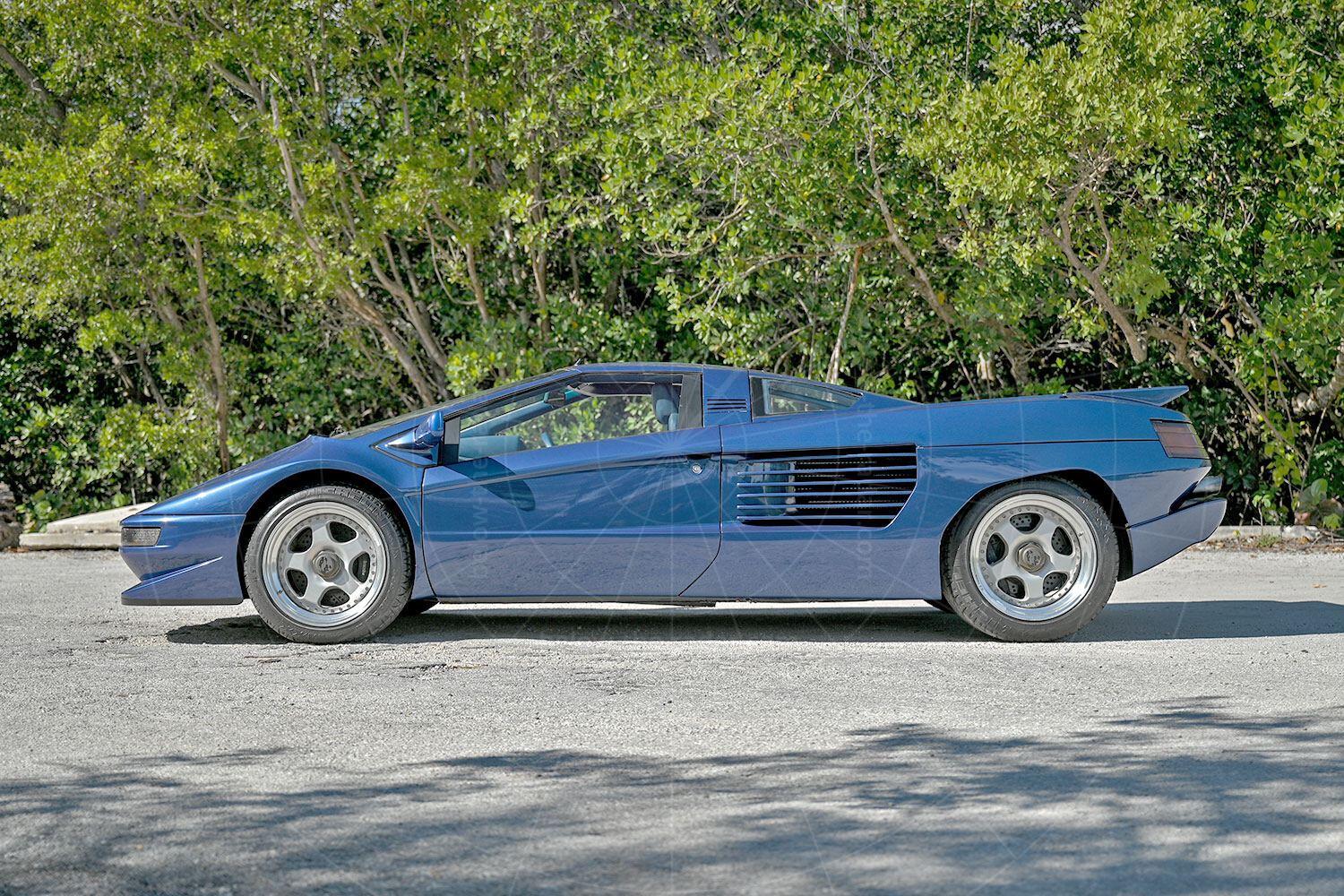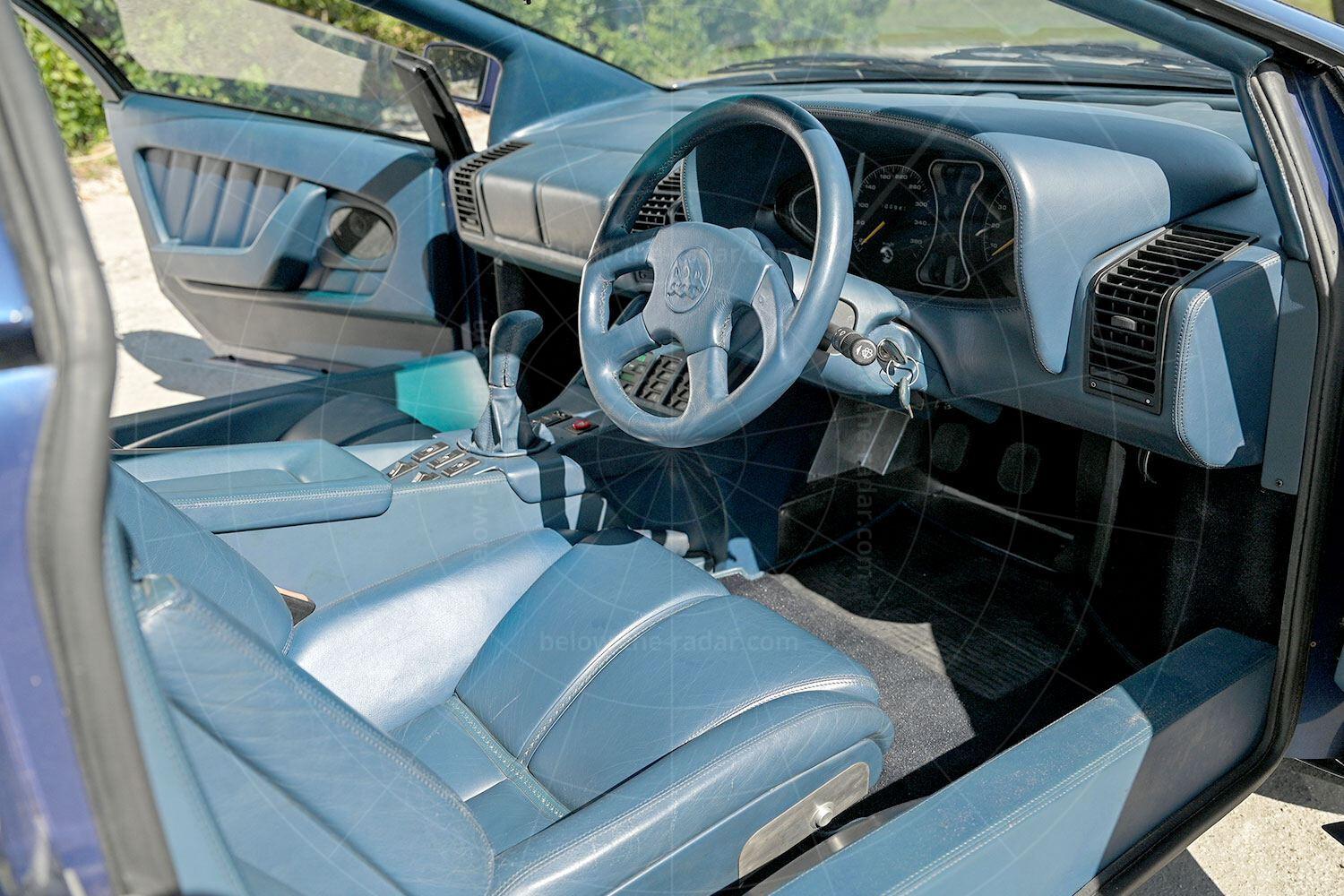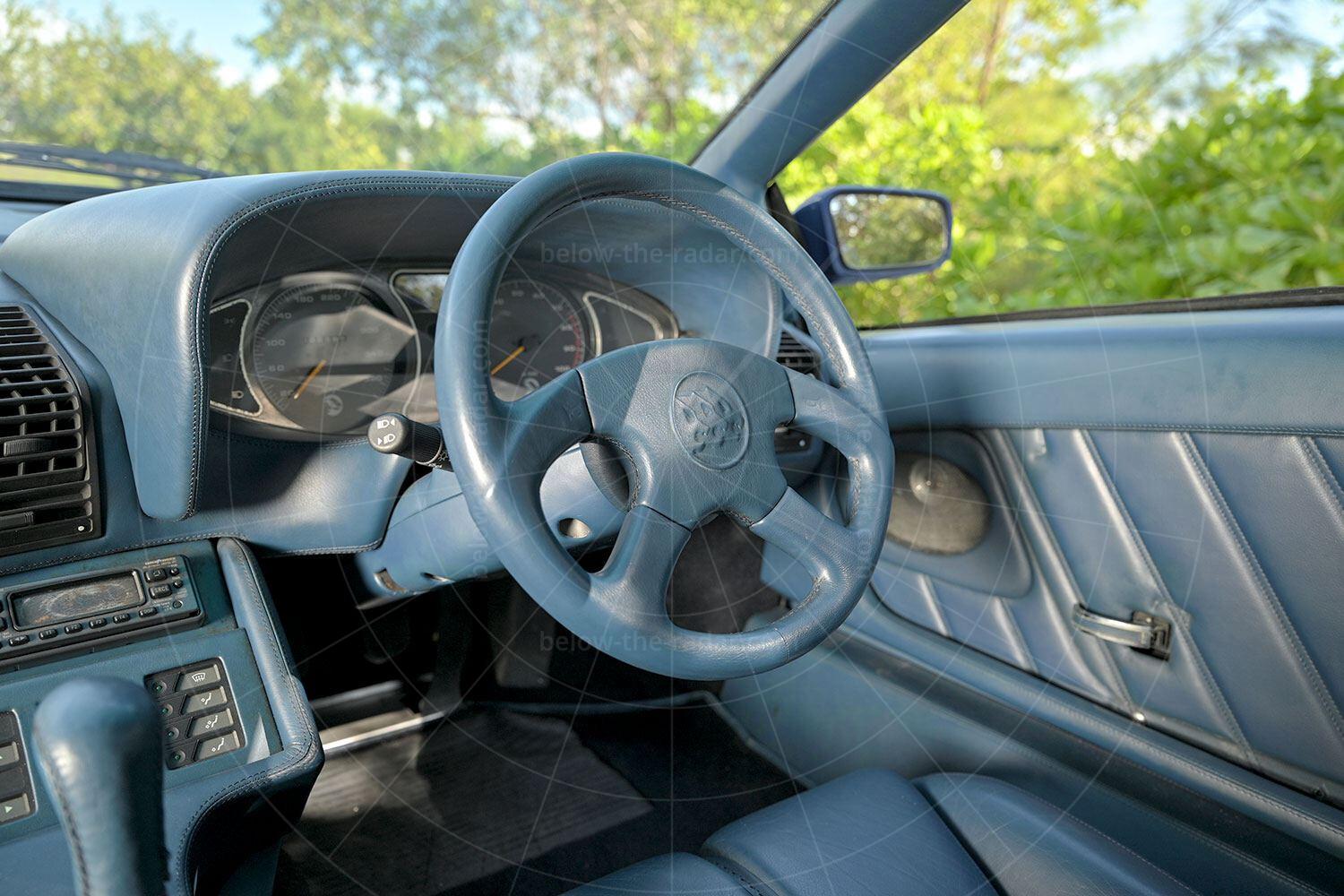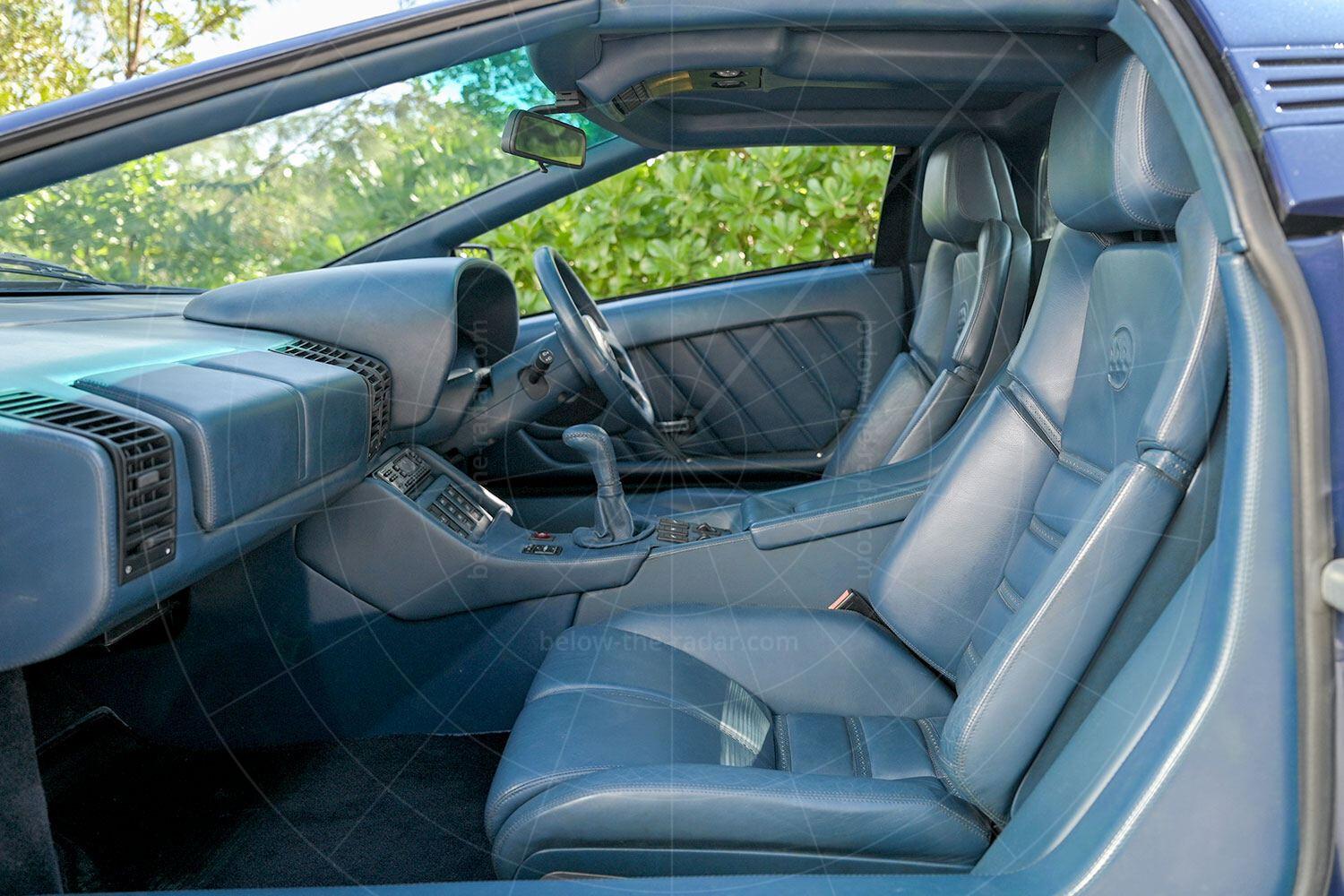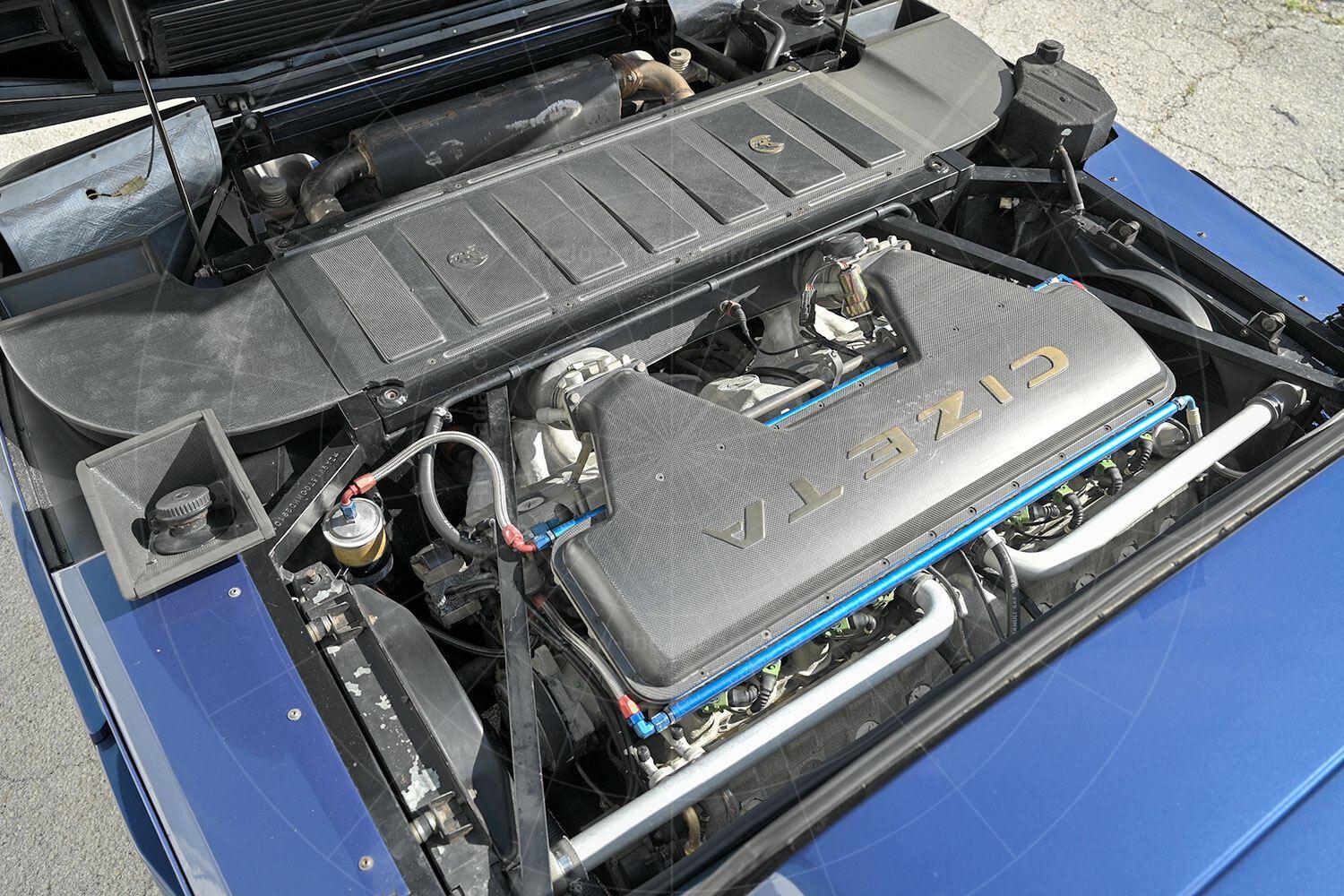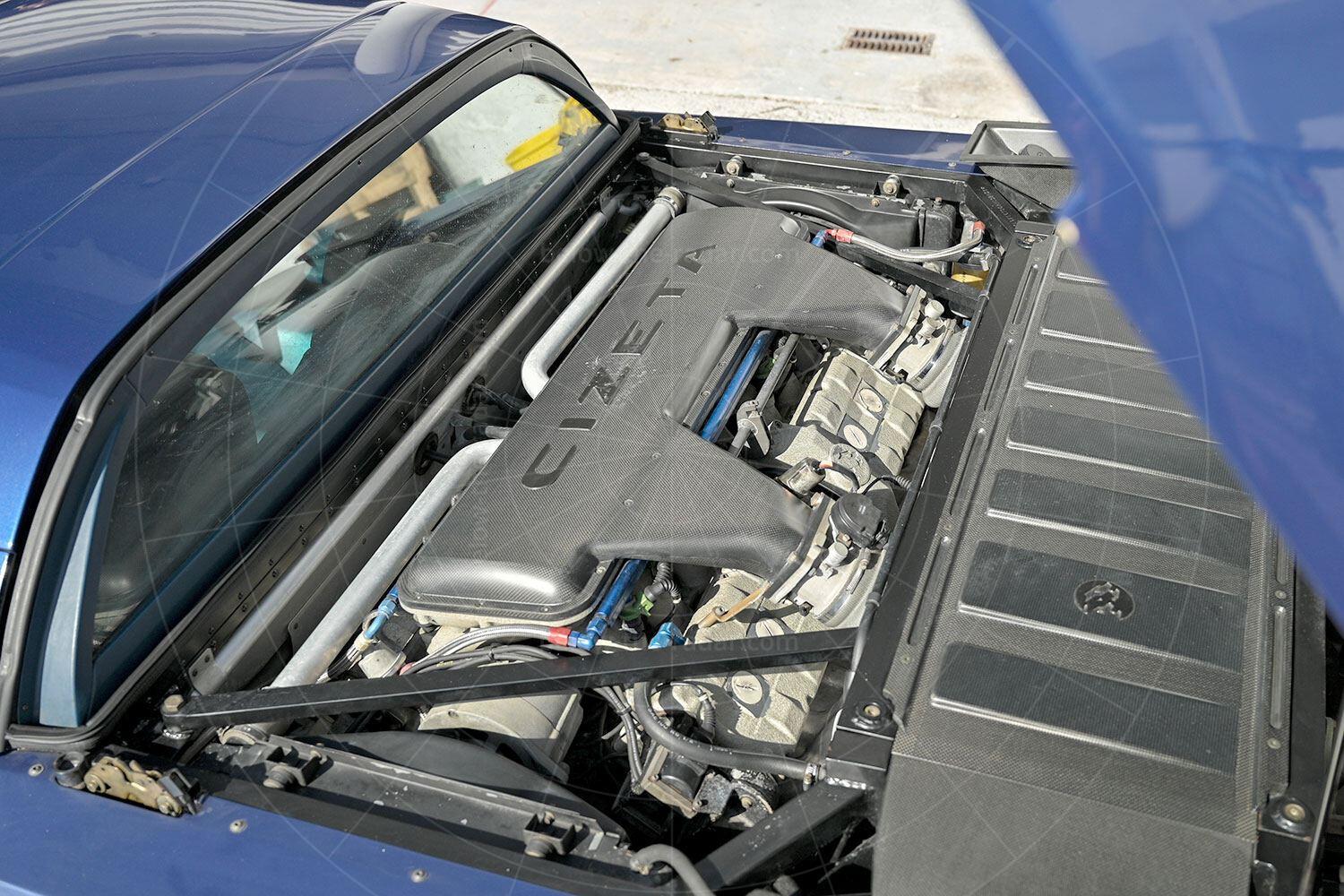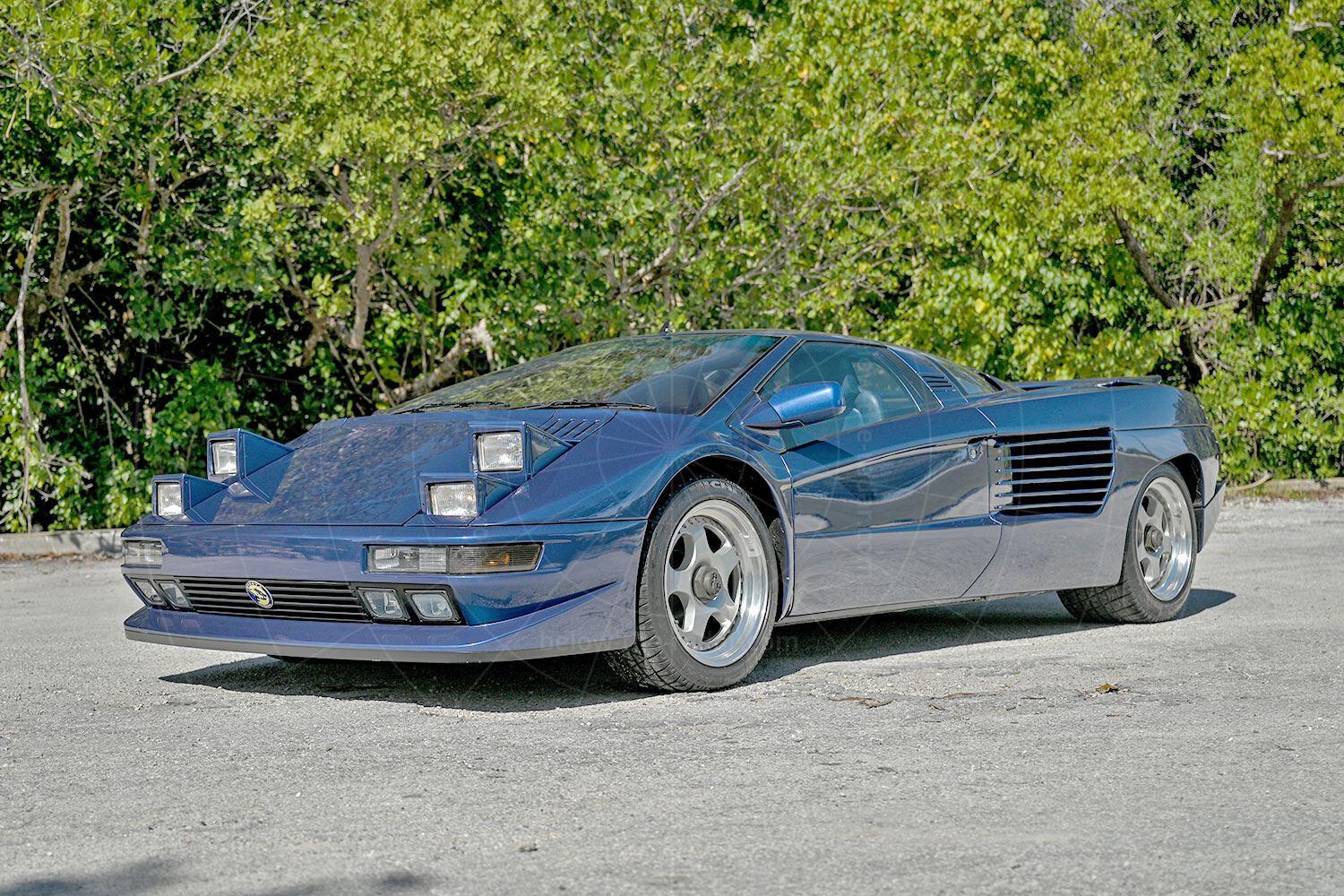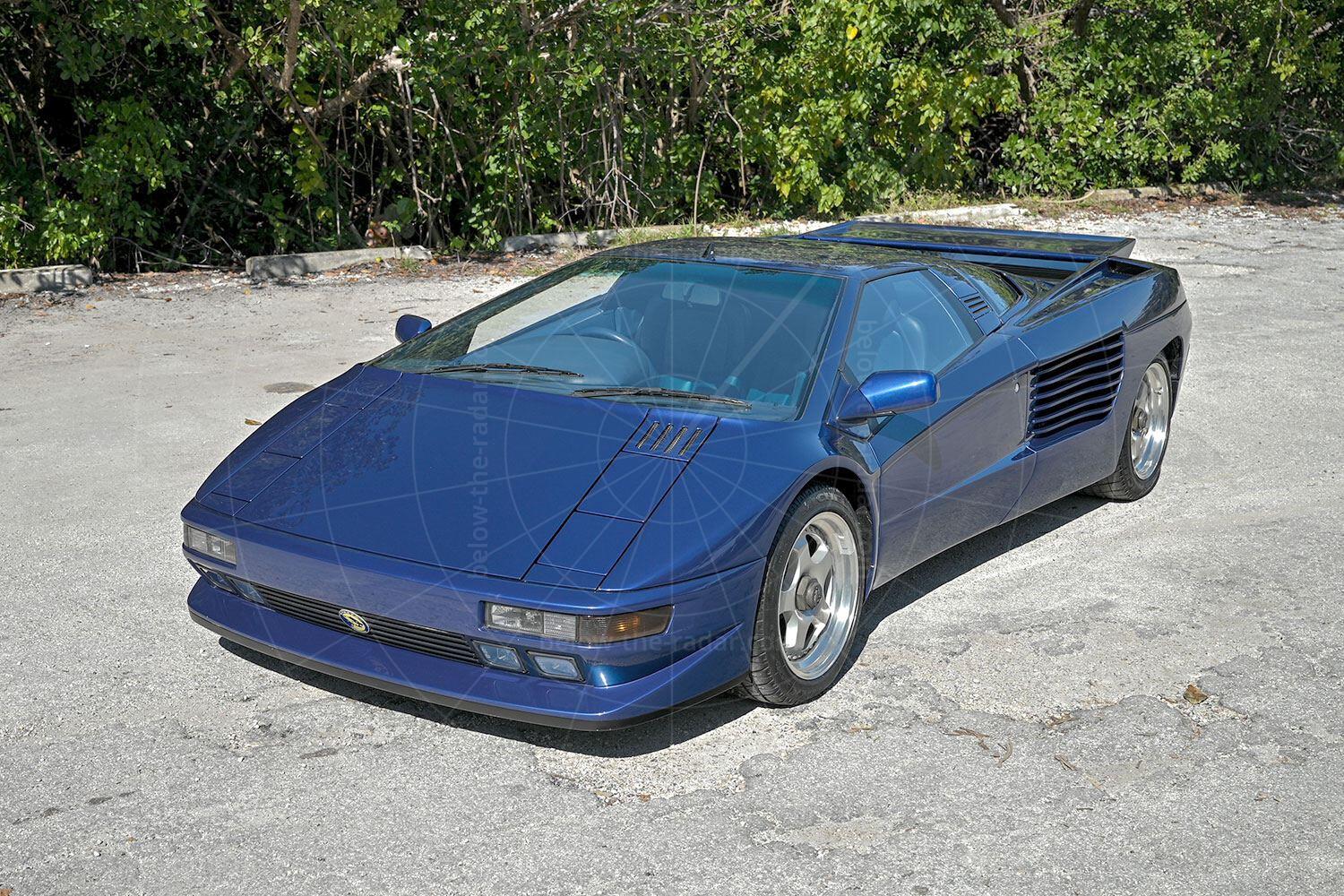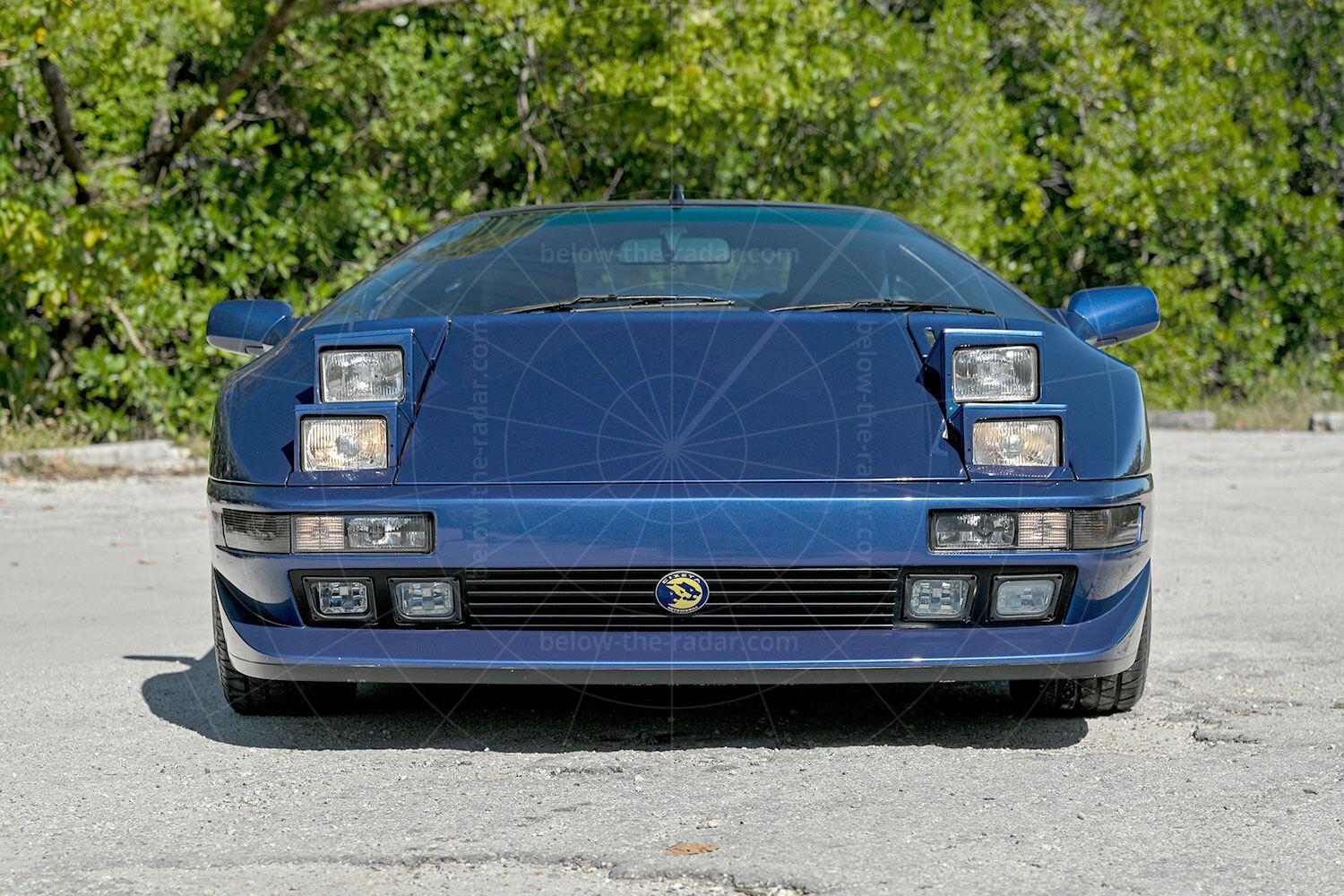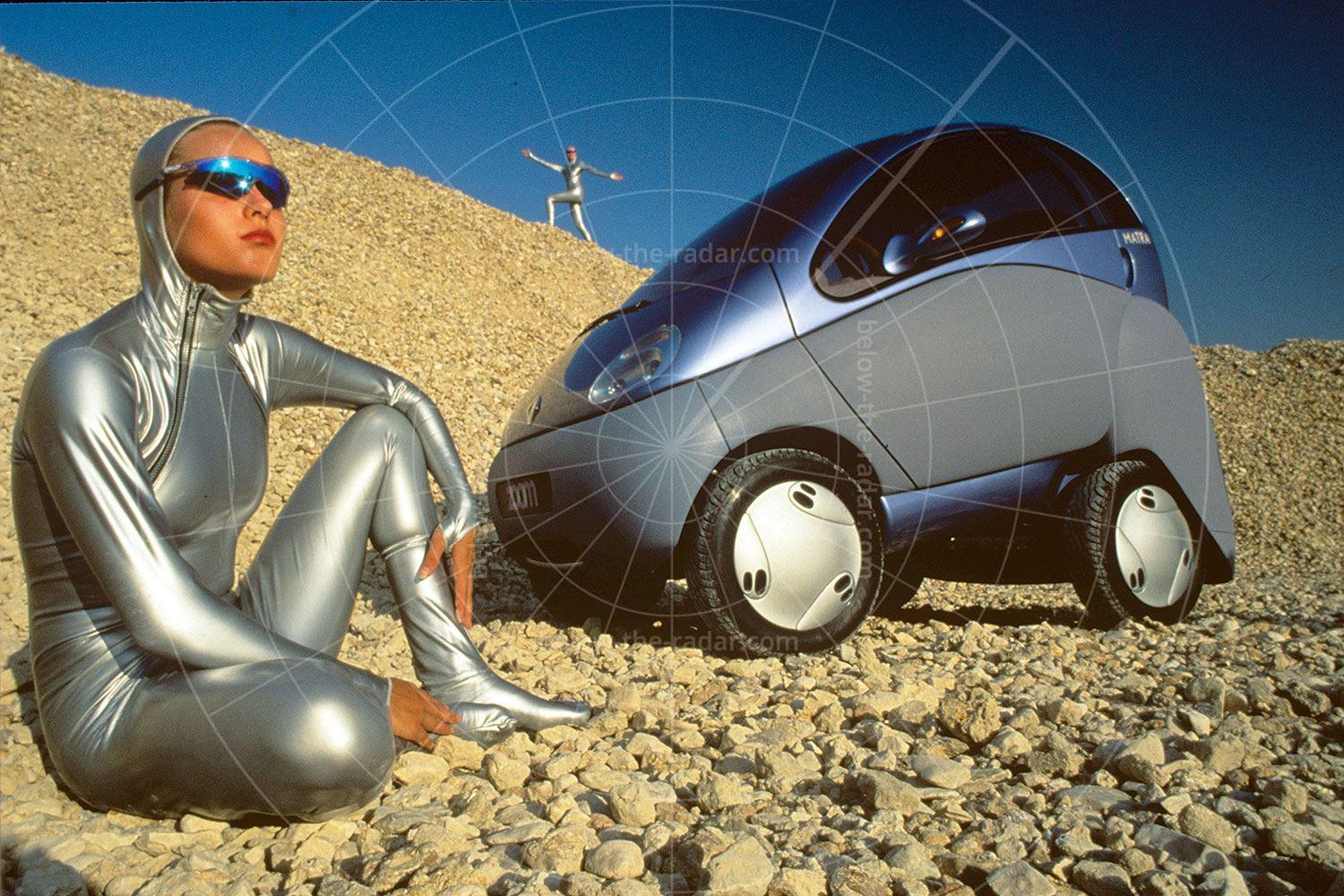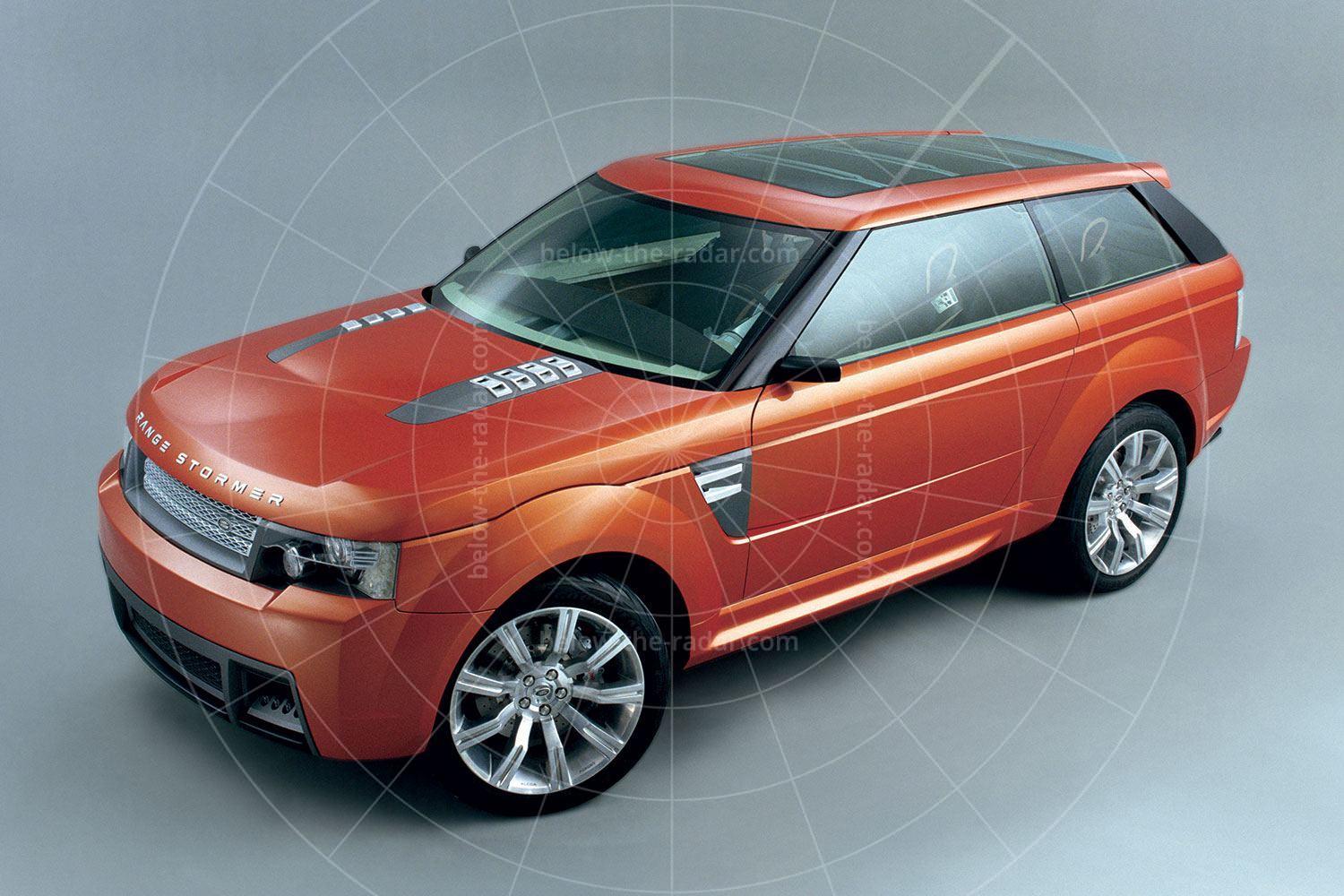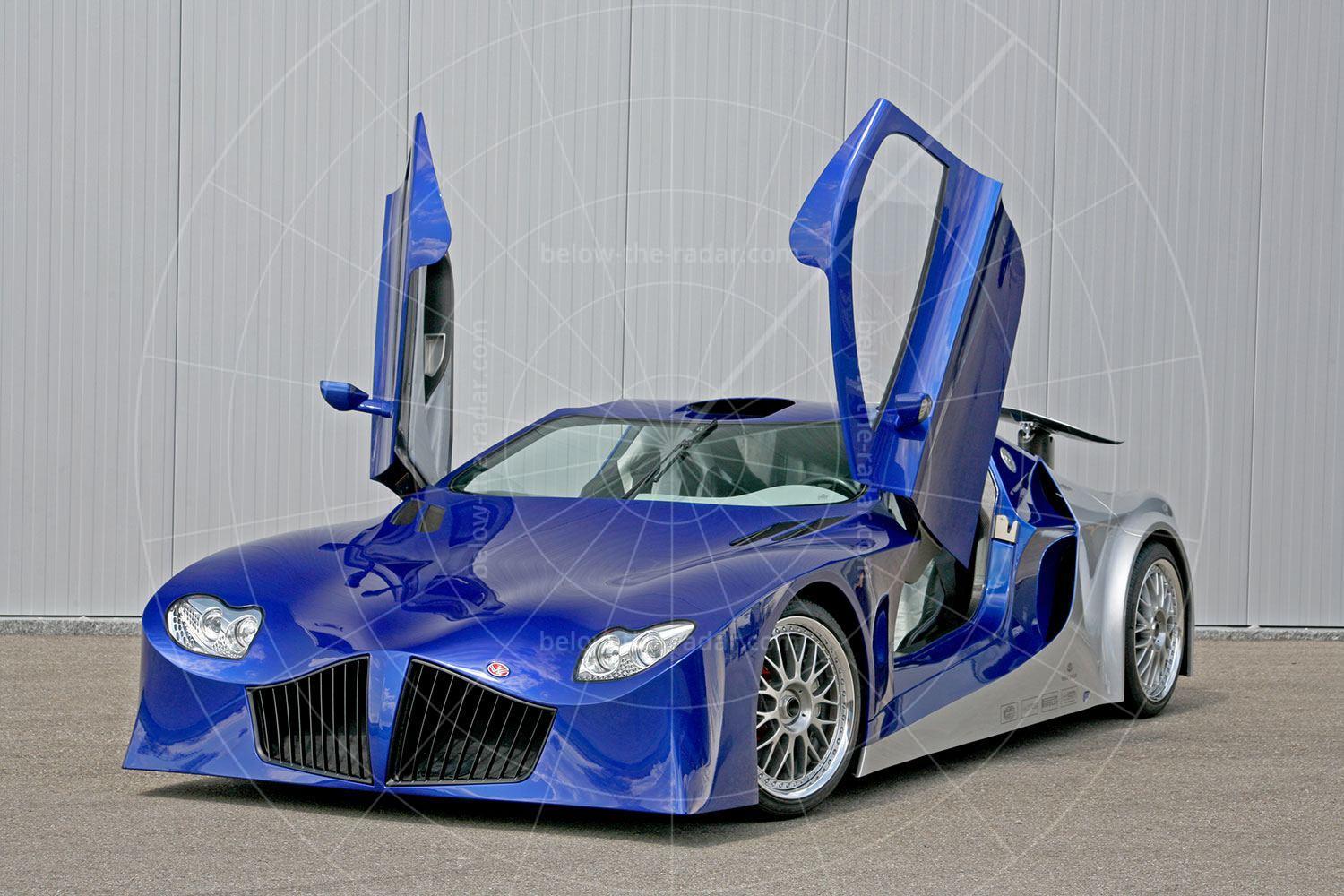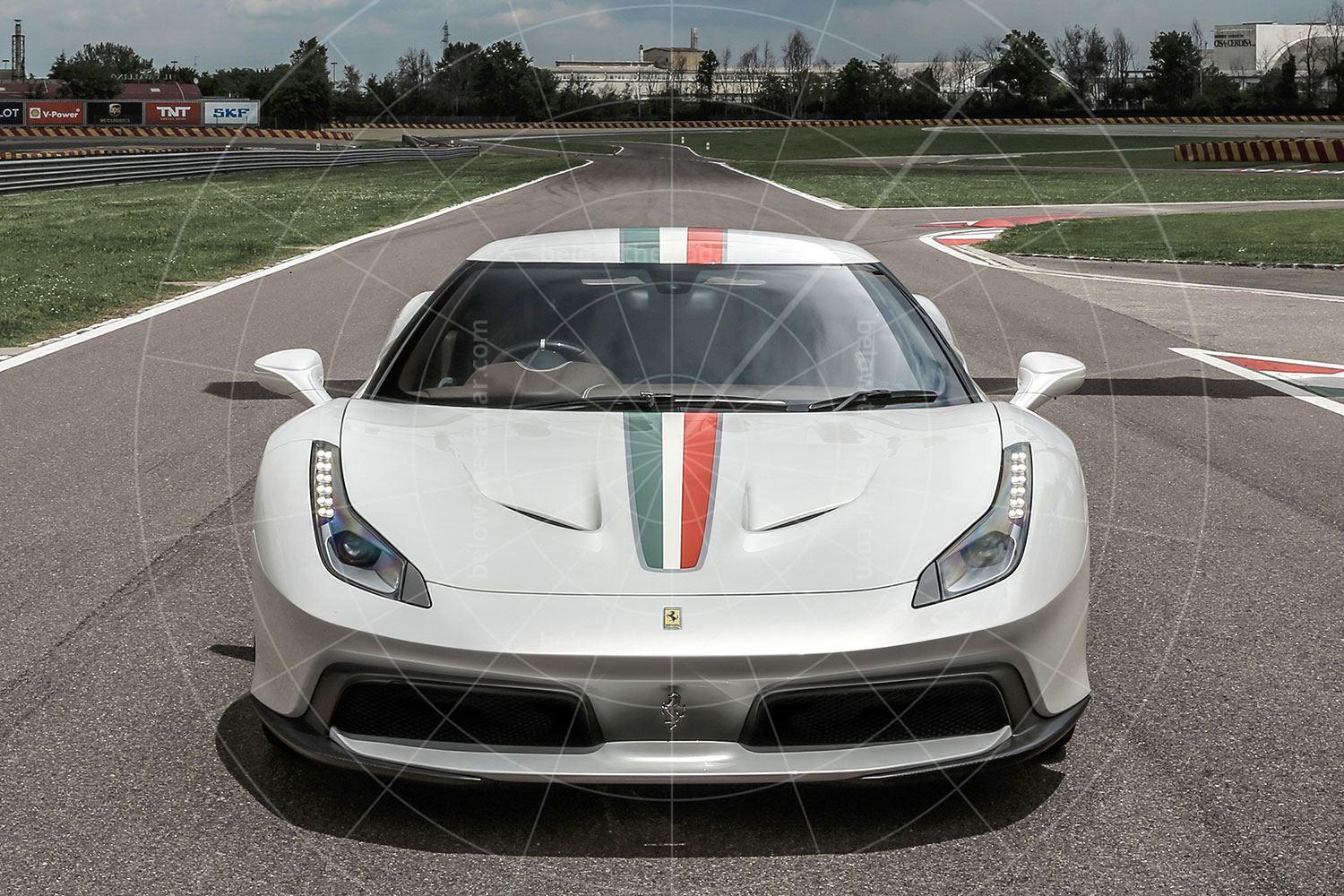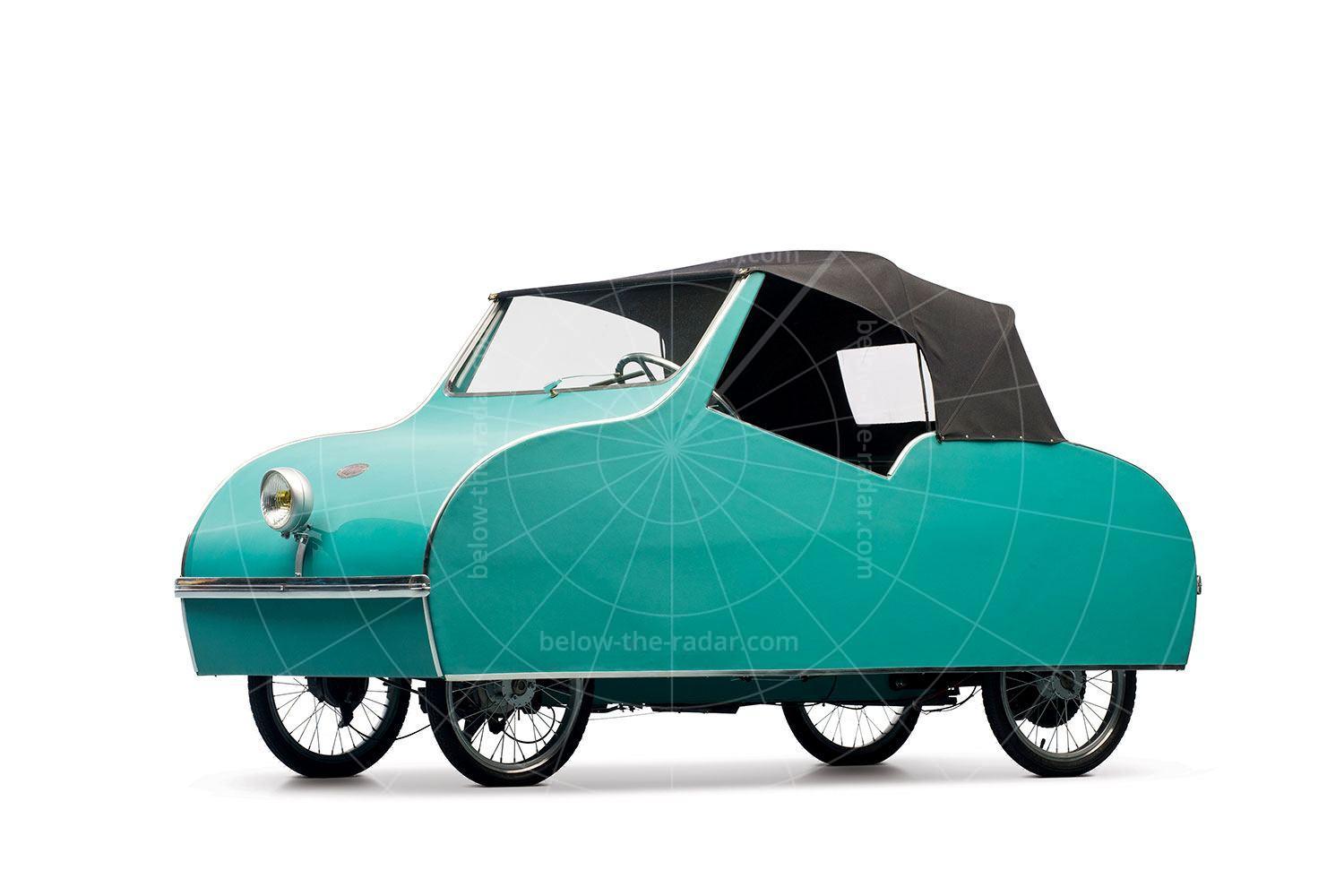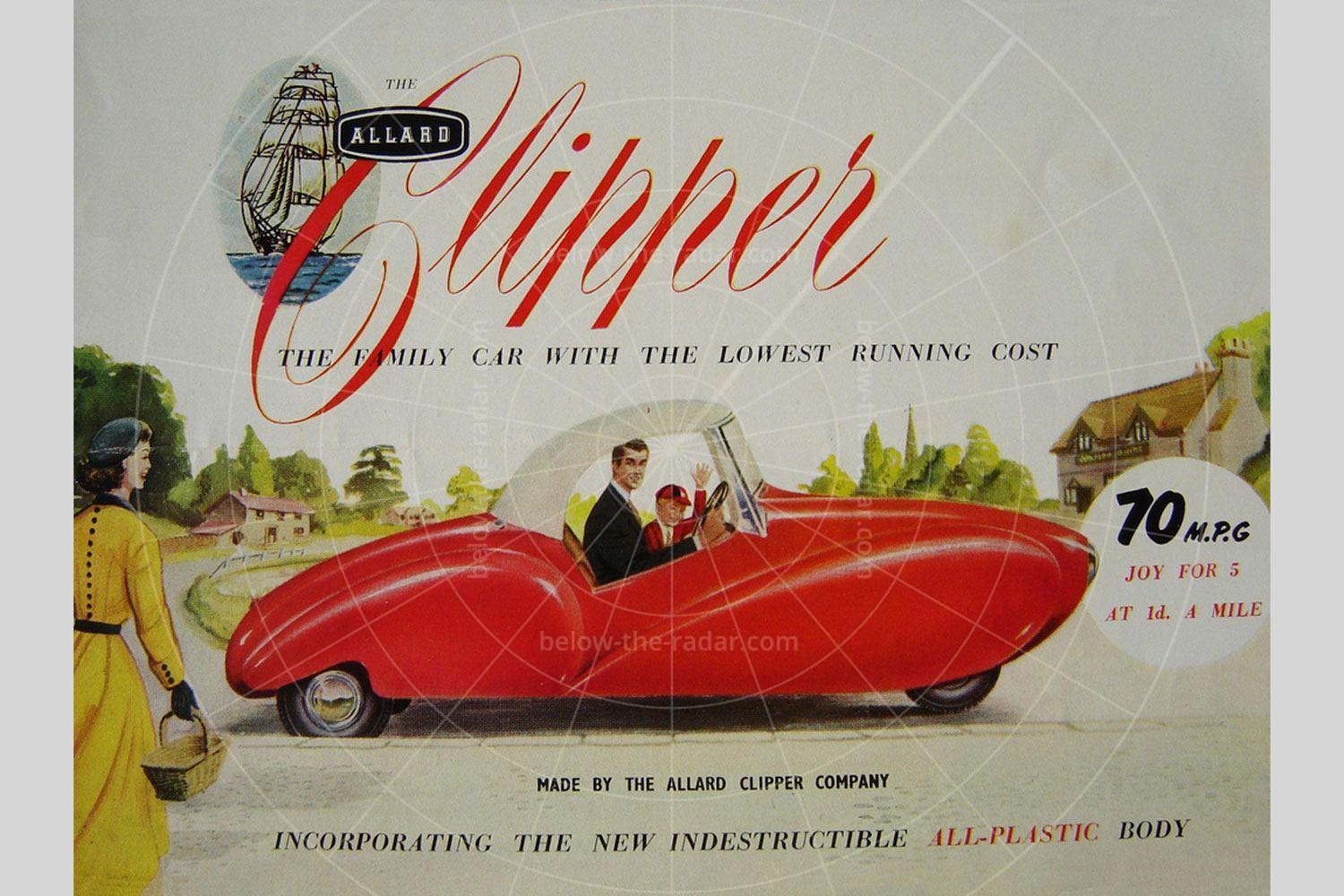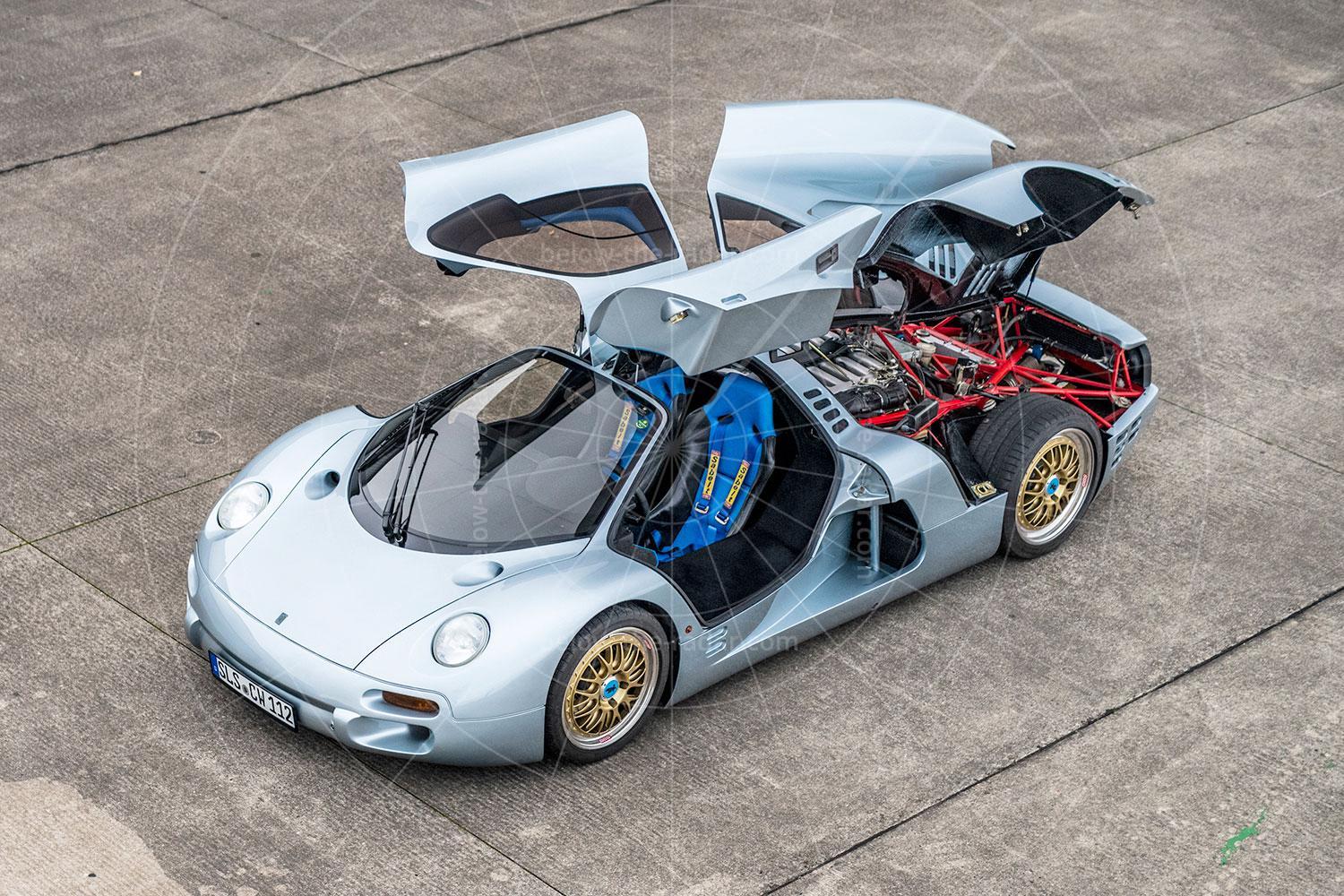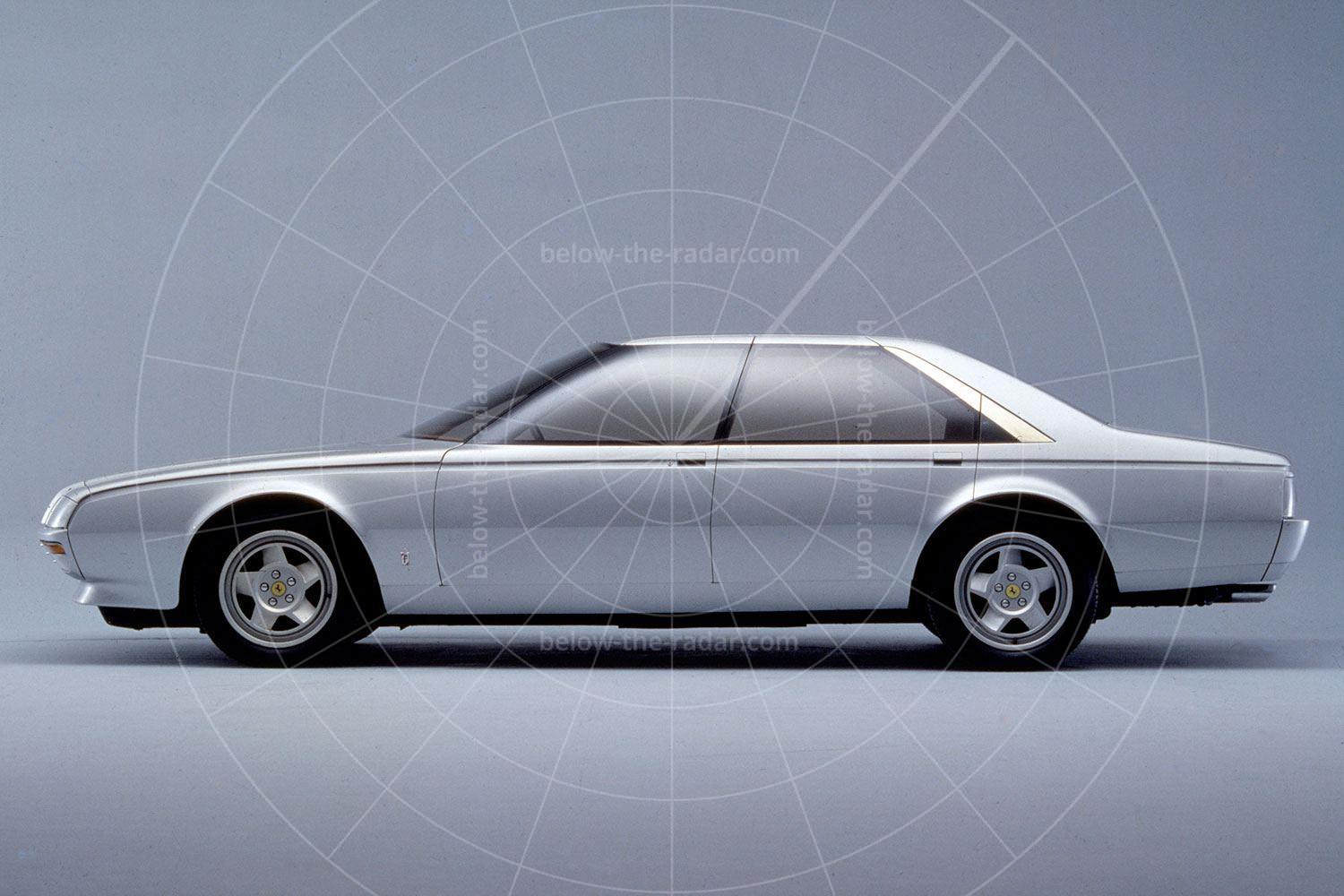If supercars are about extremes, welcome to one of the most outrageous production cars to feature in Below The Radar. Now largely forgotten, the Cizeta V16T featured a 16-cylinder engine which was mounted transversely behind the driver. Think about that for a minute; a V16 engine across the width of a car. Armed with that one fact, you can now see why the Cizeta is so monstrously wide; it had to accommodate eight cylinders across its girth. Three inches wider than a Ferrari Testarossa, the Cizeta V16T was a huge 81 inches (six feet, nine inches) across.
The outrageous Cizeta came about thanks to the supercar boom of the late 1980s. Ferrari couldn’t make enough cars, and vehicles such as the Porsche 959 were an instant sell-out. Even Lamborghini was doing relatively well, so perhaps there was room in the marketplace for another supercar that was even more extreme than anything from any of these established makers. That was the thought of Claudio Zampolli, a wealthy businessman who sold and serviced Italian exotica in Los Angeles.
Zampolli started out working for Lamborghini in the 1960s, before emigrating to the US to import and sell high-performance Italian cars from his Los Angeles base. He set up Cizeta Motors to build a new supercar, but then he got talking to music composer and car enthusiast Giorgio Moroder, who also happened to have huge amounts of money available. It was through this partnership that the car took its title, for its full name was Cizeta-Moroder V16T. Cizeta, pronounced chee-zeta, is the Italian way of saying the initials CZ, for Claudio Zampolli. The V16T was short for a V16-engined car with a T-drive, which is how the drive was taken from the powerplant.
With a capacity of 5995cc, the claimed power output of that amazing V16 engine was 560bhp at a dizzying 8000rpm, although the powerplant's red-line was set at an astonishing 9000rpm. At full chat the noise was awe-inspiring, with two overhead camshafts per bank spinning away, and 64 valves doing their stuff. There were two Bosch K-Jetronic V8 fuel injection systems fitted to the engine which was no less than five feet wide, which is why there was no alternative to taking the drive from its middle. The powerplant was effectively a pair of V8s mated to each other (complete with two crankshafts), with the power taken from the middle via a T-shaped transmission. This offered five manually selected gears, which then transmitted the power to the rear wheels.
With so much power and torque available, it was no surprise that Cizeta claimed some pretty amazing performance figures. The company said its V16T was capable of 204mph as well as 0-60mph in just 4.4 seconds. But nobody ever officially tested the car, so whether or not it was really capable of such feats will forever remain open to conjecture.
The V16T's design was the work of Marcello Gandini, the man who must have designed more supercars than anyone else. Besides the Bugatti EB110 and Lancia Stratos, he also penned numerous Lamborghinis such as the Countach and Diablo. Look at these cars and you can see his mark in all of them; the extreme cab-forward stance, the cut-off rear wheelarch and the plunging side windows at the front, and the V16T was no different. After the excesses of the exterior, the cabin was rather tame – perhaps even something of a let down. It was well put together, but didn’t look any more upmarket than some of the better kit cars that were being produced at the time.
Zampolli had drafted in Oliviero Pedrazzi as chief engineer, whose job it was to design that awe-inspiring V16 engine. Pedrazzi had been pinched from Lamborghini and so had Achille Bevini, who was in charge of the suspension and chassis design. Giancarlo Guerra was another Lamnborghini refugee who was tasked with making the first cars; he already had 40 years' experience of making Italian supercars for the likes of Scaglietti (Ferrari 250GTO) and Lamborghini (Countach), so he wasn't fazed by having to create the first prototypes from scratch.
Zampolli was adamant that the Cizeta had to have the best of everything, so the suspension followed race car practice with unequal-length wishbones connected to aluminium alloy uprights, with Koni spring/damper units. At the back there were double wishbones once more, this time with inboard spring/damper units actuated by bellcranks linked to the hub carriers. With 12-inch ventilated discs, two-pot callipers and single-nut wheels, the Cizeta was seen as a true race car for the road – complete with now laughably small OZ two-piece cast-alloy 17-inch wheels.
Two things that the Cizeta didn't get as Zampolli was dead set against them, was four-wheel drive and a turbocharged engine. The first one added weight and complexity, while also creating packaging problems and forcing compromises with the suspension geometry. The second one blunted throttle response too much – and that one thing would damage the driving experience unacceptably. What Zampolli did desperately want for his new car was anti-lock brakes, but Bosch wanted far too much money for him to be able to afford to fit such tech, so it wasn't even an extra-cost option.
Four years after the project had started, the initial Cizeta V16T prototype was shown at the start of 1989, at which point Cizeta claimed to be sitting on seven firm orders. The company had the capacity to build 100, although Zampolli would be very happy with 50 per year. Well of course he would, at a projected price of £250,000 ($400,000).
Steve Cropley drove that first Cizeta, for Car magazine. Although it was the first prototype, it would be sold into private hands after it had done the rounds of various shows and exhibitions, so the quality had to be in keeping with the price – and it was. The materials were superb, and so was the fit and finish. What impressed Cropley in particular, was the way that so much thought had been given to maintenance. Everything was accessible – all 16 spark plugs, the various filters, fuel lines and pumps, to make the mechanic's life easier.
It was another three years before the first Cizeta was ready to be delivered to its owner. That was in January 1991; a year later Fast Lane magazine got to test one of those first V16Ts. By that point Cizeta was declaring an annual capacity of just 15 cars, while the claimed top speed had dropped to 187mph while the price had risen to £339,000 ($630,000). Unable to really open up the car, reviewer Stefano Pasini merely stated that the V16T "is enormously fast… corners sharply" and that when the mammoth powerplant is revved "the hum quickly becomes a frantic, high-pitched roar, a kind of explosion of mechanical savagery that you find only in the highest-level Italian supercars".
By this point in the V16T's life, Giorgio Moroder had lost interest and walked away, frustrated by the delays of engineering an all-new car, as well as the amount of money that was required to do it properly. Of course Moroder took his money with him which resulted in the original brand of Cizeta Motors being reinstated. With funding now a serious issue, and the Lamborghini Diablo having been launched at half the price, it was only a matter of time before the company called it a day, although it lingered on until 1995, by which point about a dozen V16Ts had been made.
However, that’s not the end of the story. In 2003 Zampolli unveiled a roadster version of the V16T, with the promise of up to another four to follow. This was almost 20 years after the V16T project had begun though, and predictably Zampolli had also lost interest in the project by now, and although the Cizeta was theoretically available to buy in spyder and coupé forms for years after that open-topped car was made, no further V16Ts were ever built.
| Column 1 | |
|---|---|
| Produced | 1991-1995, 2003 on |
| Number built | Approx 12 |
| Engine | Mid-mounted, 5995cc, V16 |
| Transmission | 5-speed manual, rear-wheel drive |
| Power | 560bhp at 8000rpm |
| Torque | 469lb ft at 6000rpm |
| Top speed | 204mph (claimed) |
| 0-60 | 4.4sec (claimed) |
Many thanks to RM Sotheby's for the use of the pictures of the blue Cizeta in this article. In January 2021 RM Sotheby's auctioned the blue Cizeta V16T pictured, with the following description:
It is no surprise that each V16T produced has an interesting backstory. This car, chassis 101, is no exception. After Brunei became an independent country in 1983, the Sultan of Brunei and his family used a portion of their vast oil wealth to build the largest car collection the world had ever seen. Commissioning approximately 2000 cars from all different manufacturers, the Royal Family single-handedly kept many luxury brands in business through the tough years of the 1990s. Their search for the most exclusive and technically advanced cars money could buy led them to Cizeta. The Royal Family purchased three of the nine Cizeta V16Ts built: this blue example and two black examples.
Chassis 101 was ordered by Hong Seh Motors of Singapore on behalf of the Brunei Royal Family. Hong Seh was the official Ferrari dealership in Singapore, and many cars from the Royal Family’s collection were ordered through them. Finished in blue with blue leather interior and with right-hand drive, chassis 101 was used in press photoshoots throughout Italy and was displayed at the 1993 Geneva Auto Show. Nearly all 983 kilometers (~611 miles) on the odometer at the time of cataloguing are believed to have been accumulated during testing by the factory in this period. Interestingly, chassis 101 has horizontal slats over the side air intakes like the prototype, while most other examples have vertical slats.
Chassis 101 was shipped from Modena to Asia in March 1993; for unknown reasons, it remained with Hong Seh Motors in Singapore for over 25 years and was never delivered to Brunei. Pininfarina subsequently heavily modified the other two V16Ts purchased by the Royal Family with Ferrari flat-12 engines and irreversible structural changes. One of those cars remains in an incomplete disassembled state, while the other is displayed in the Marconi Museum in Tustin, California. Chassis 101 is the only V16T from the Brunei Royal Family’s collection to have escaped this fate and today remains just as it arrived in Singapore.
The current owner purchased chassis 101 from Hong Seh Motors in 2020 and returned the car to driving condition after its two-and-a-half-decade stay in Singapore.

